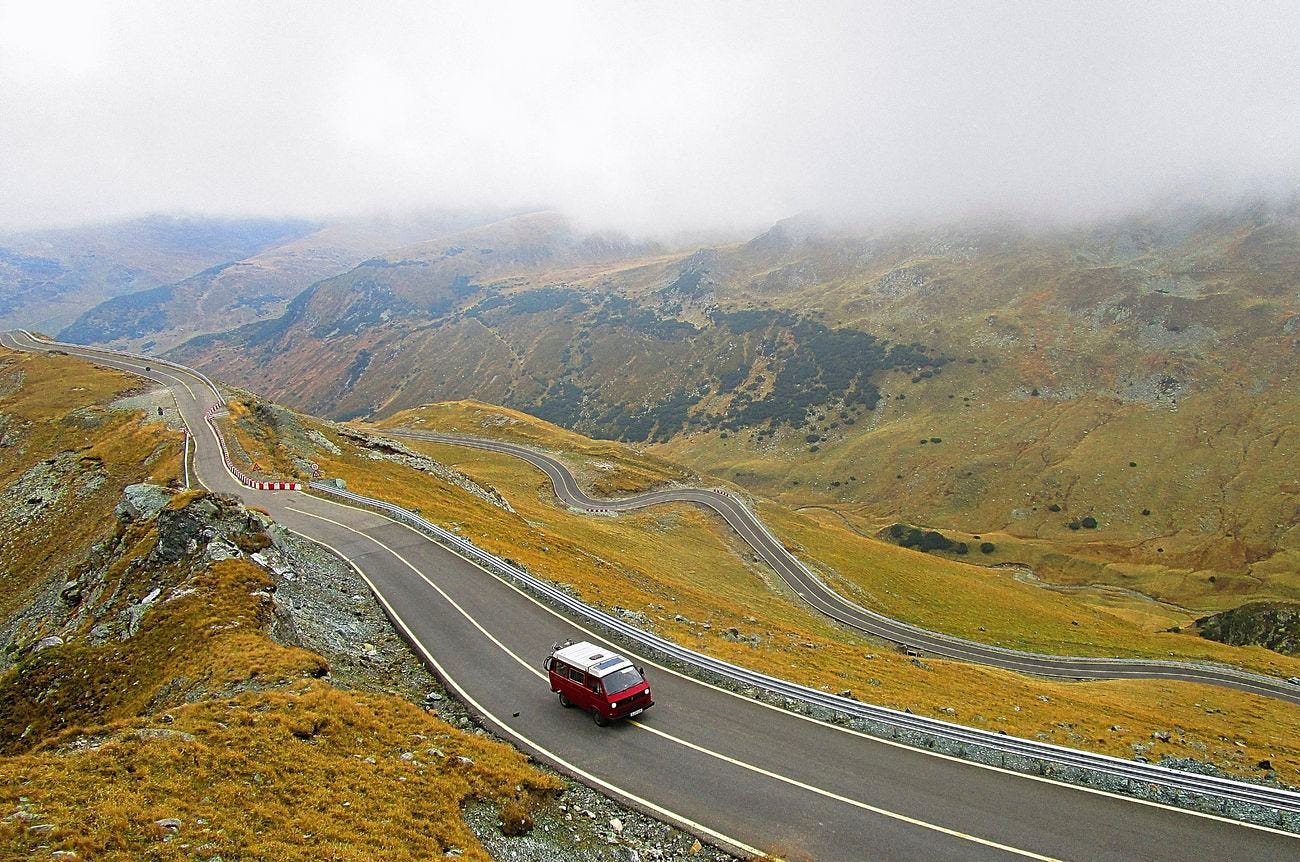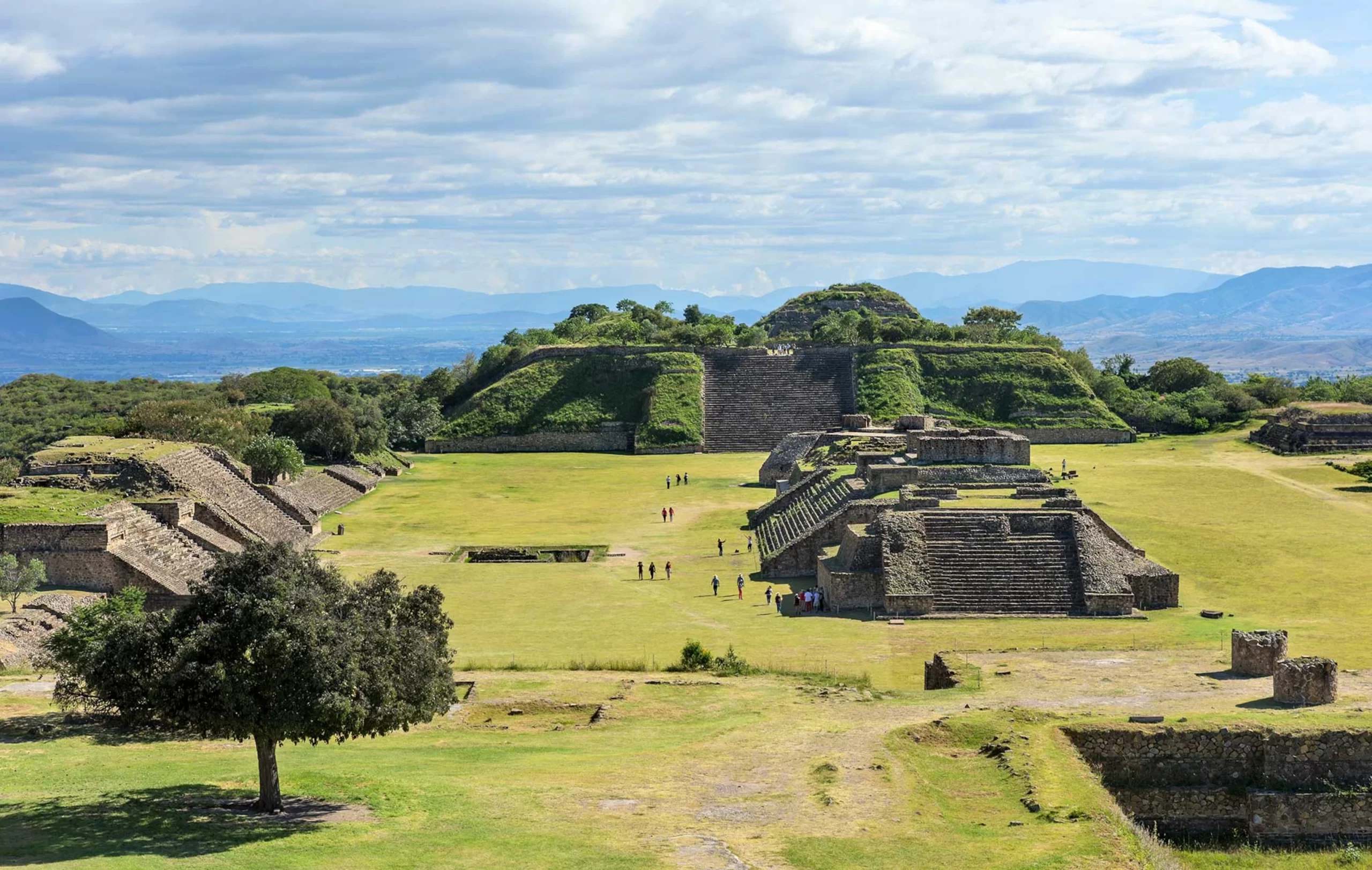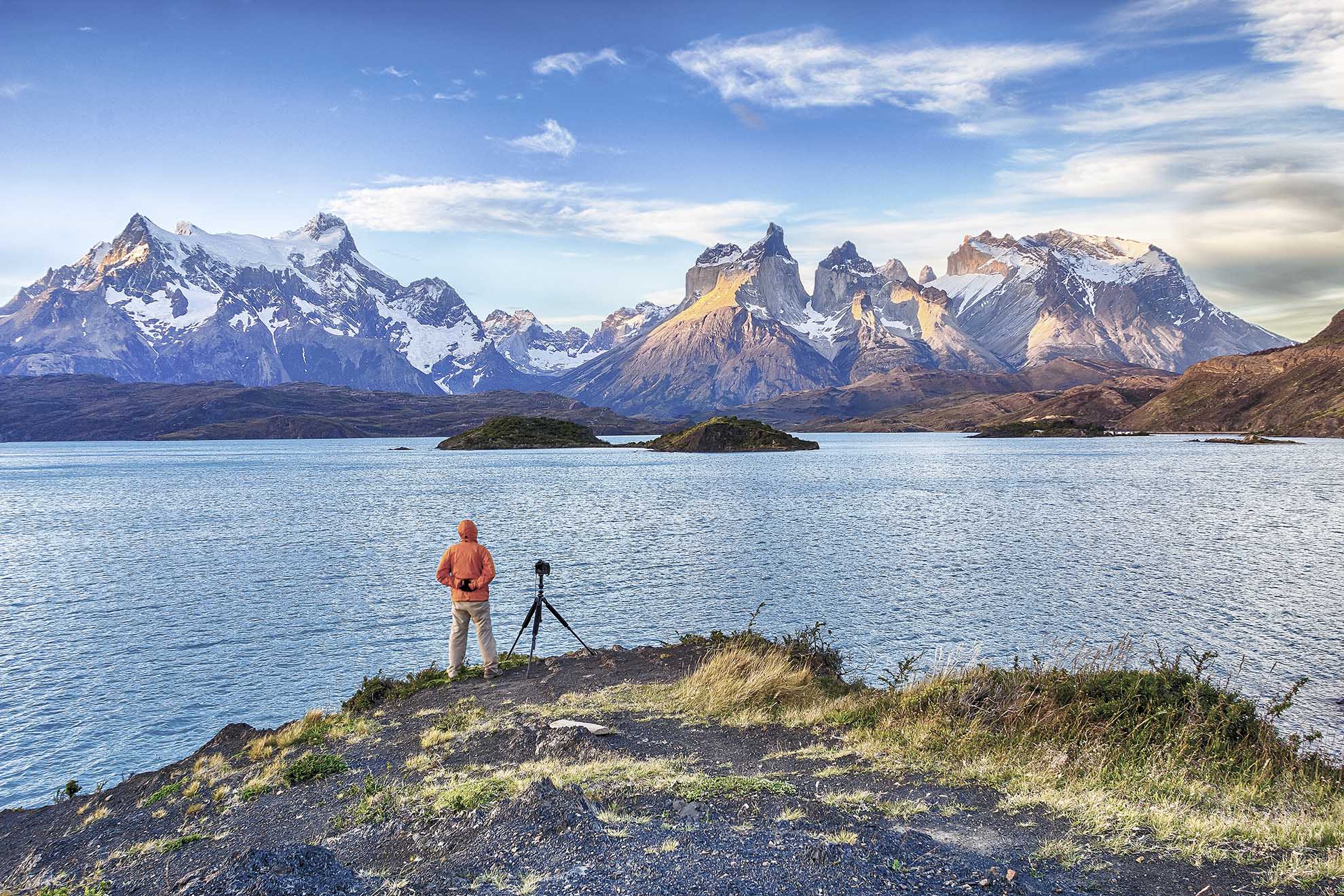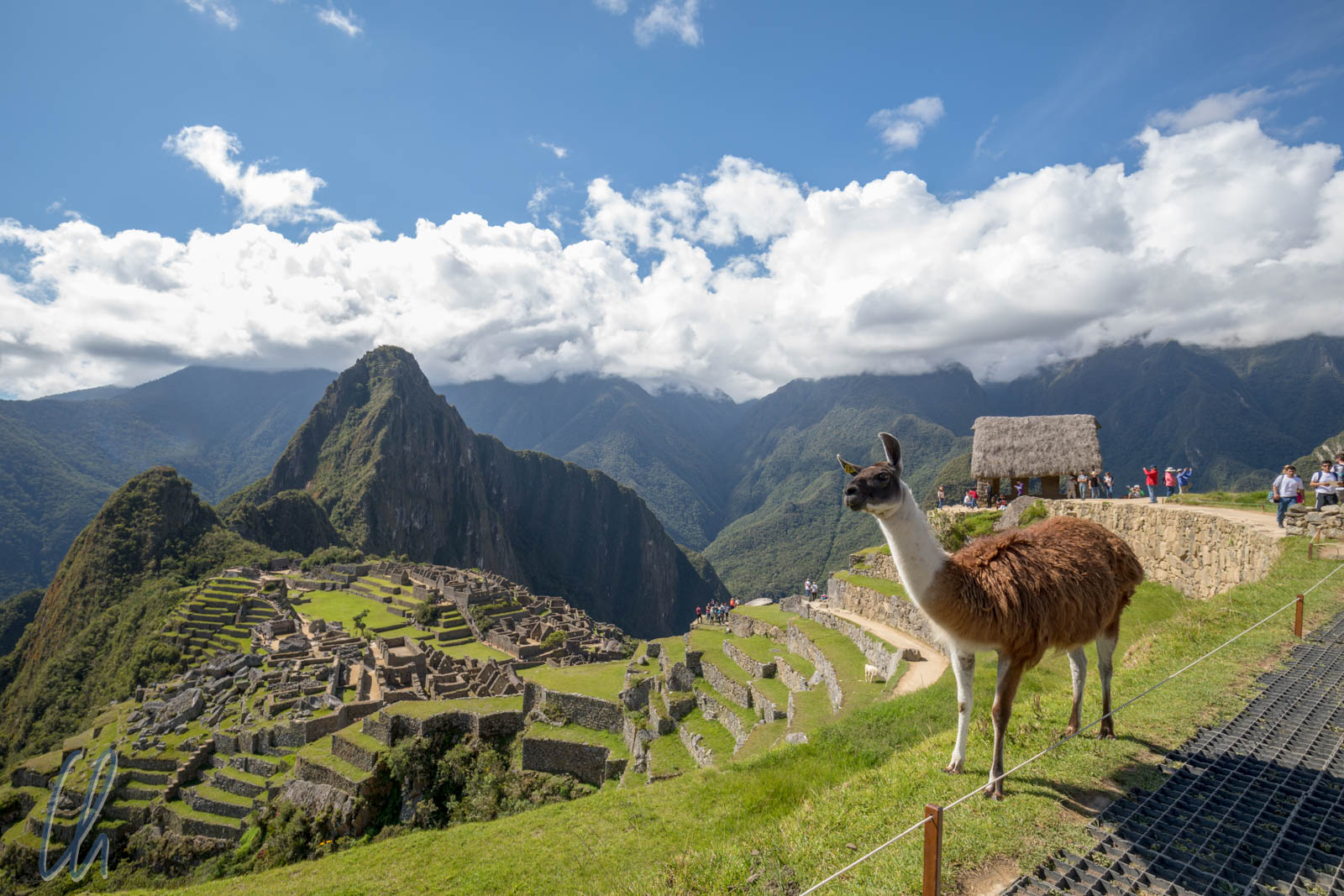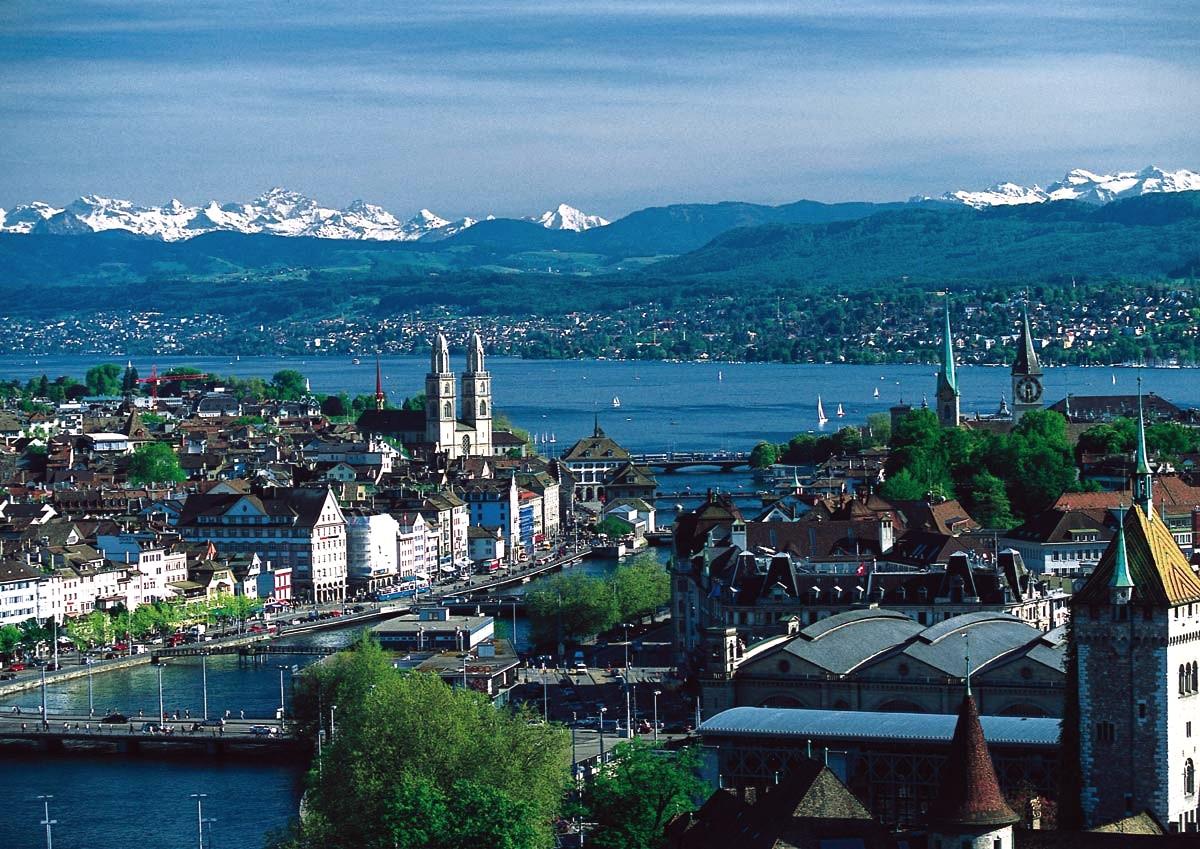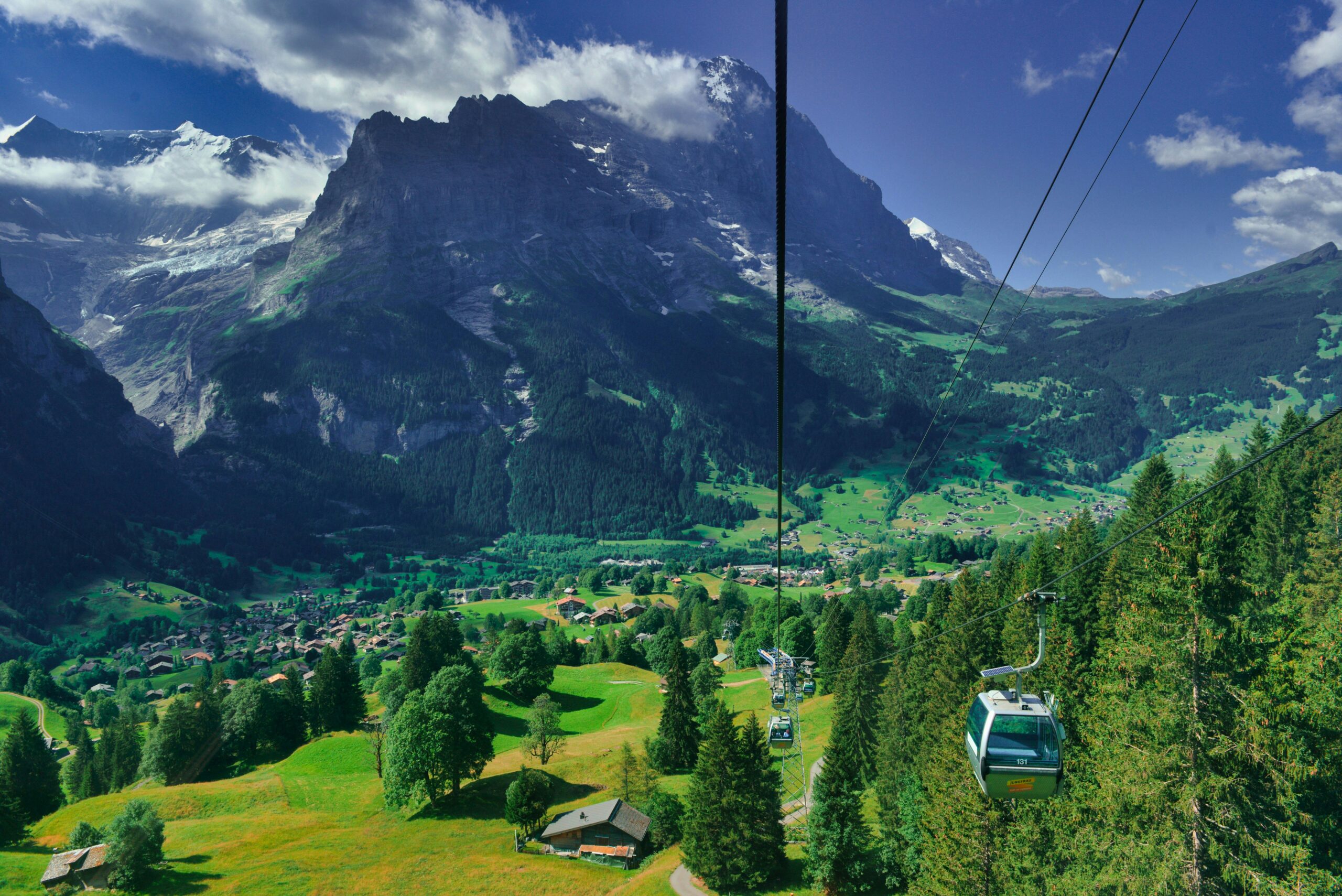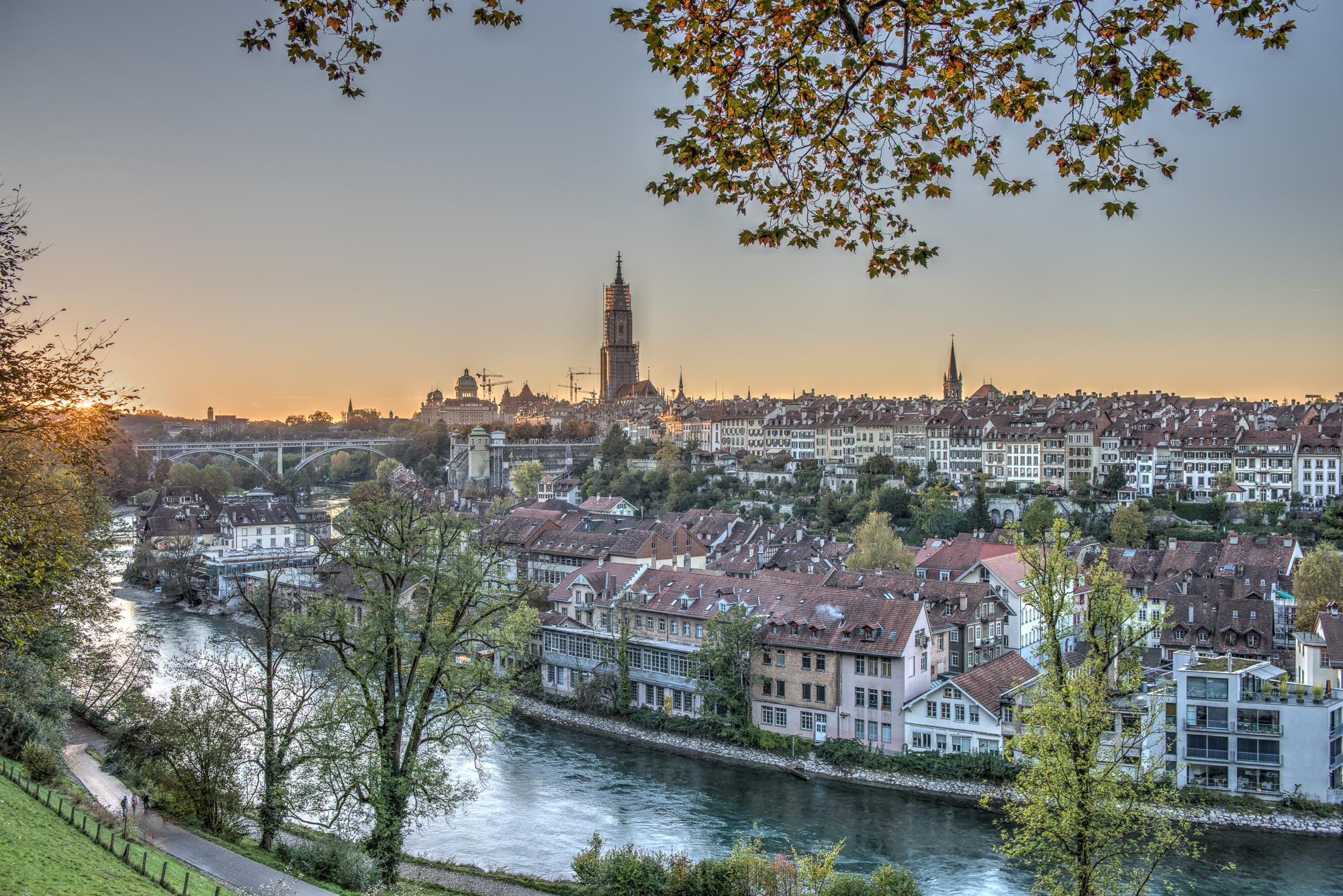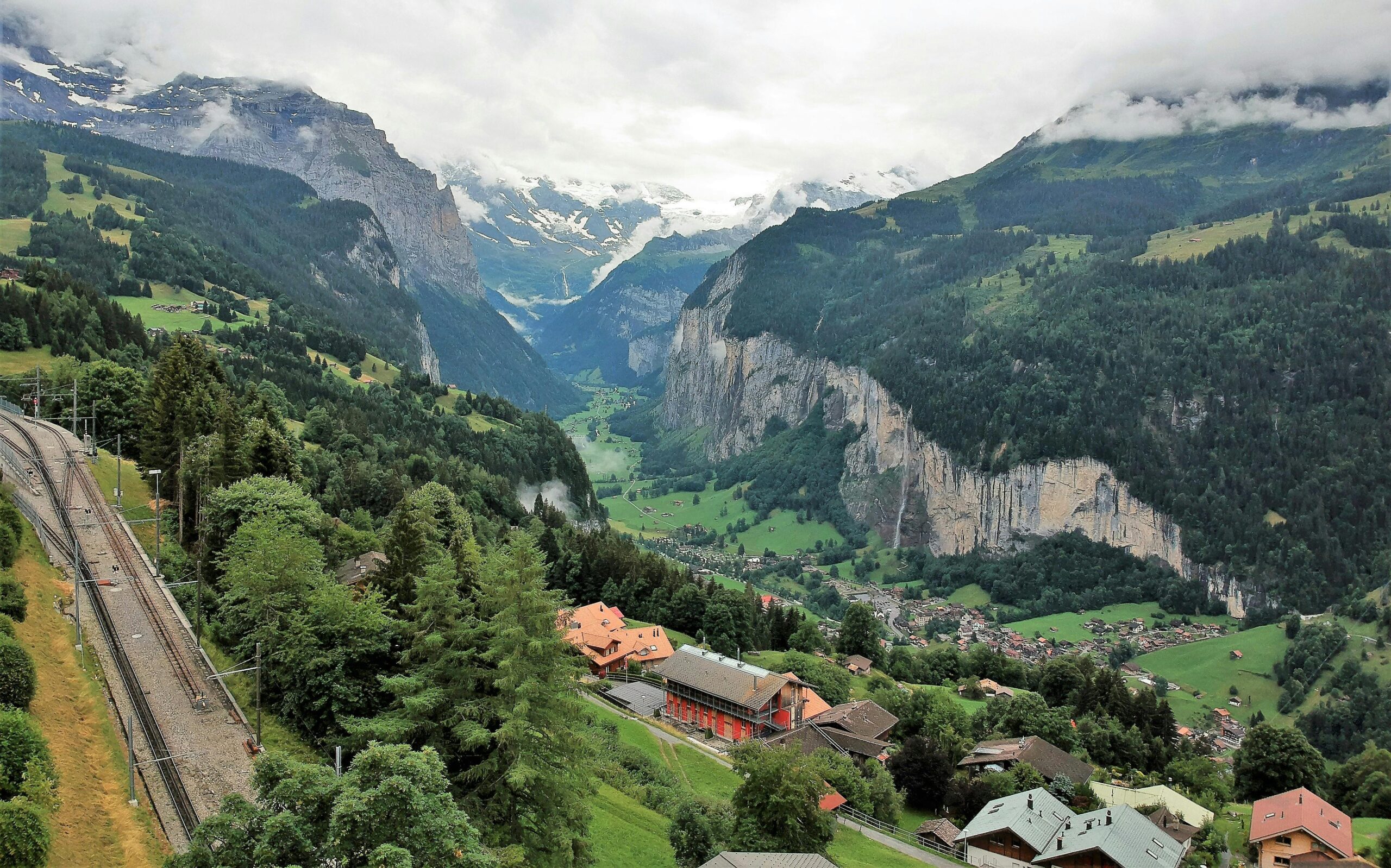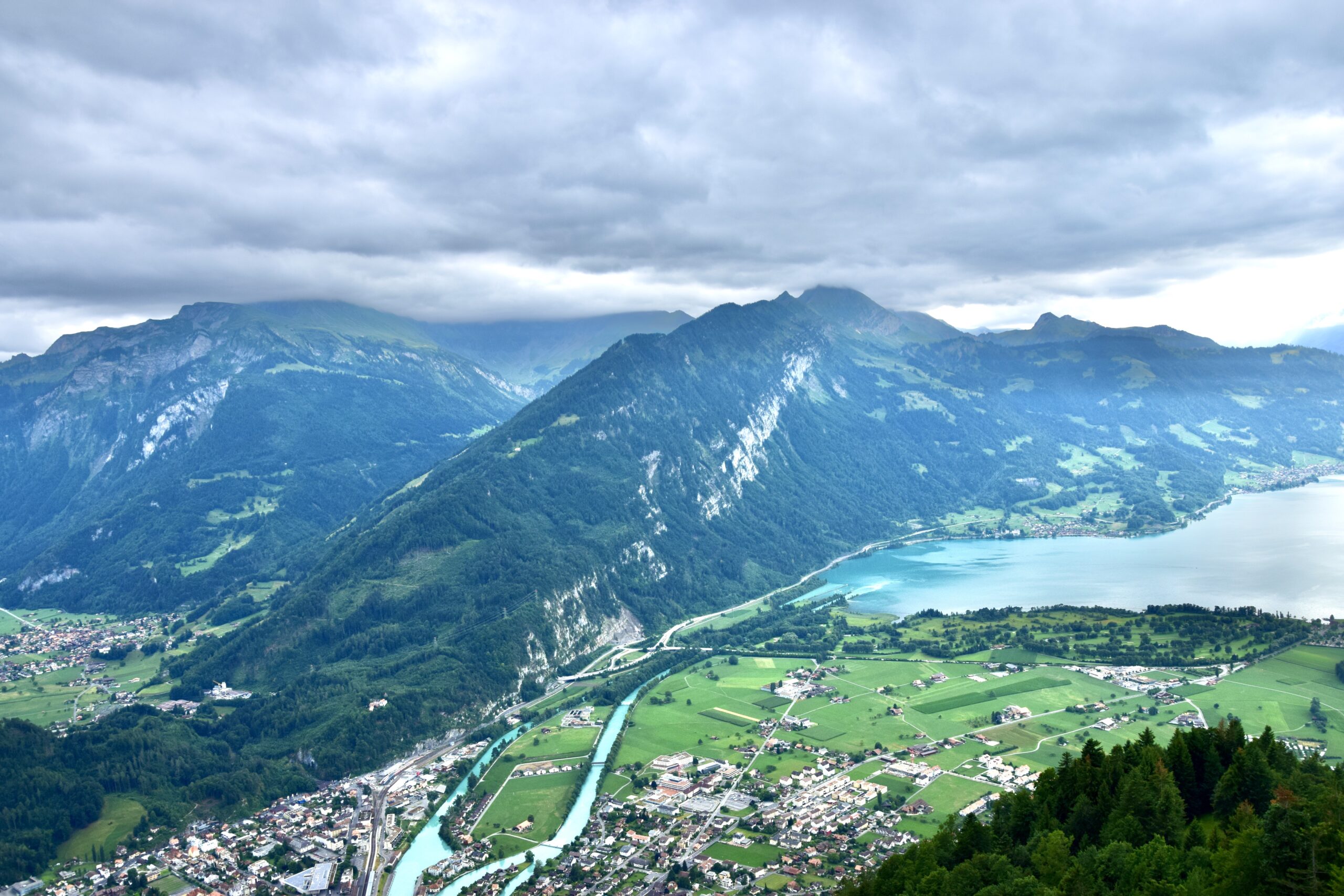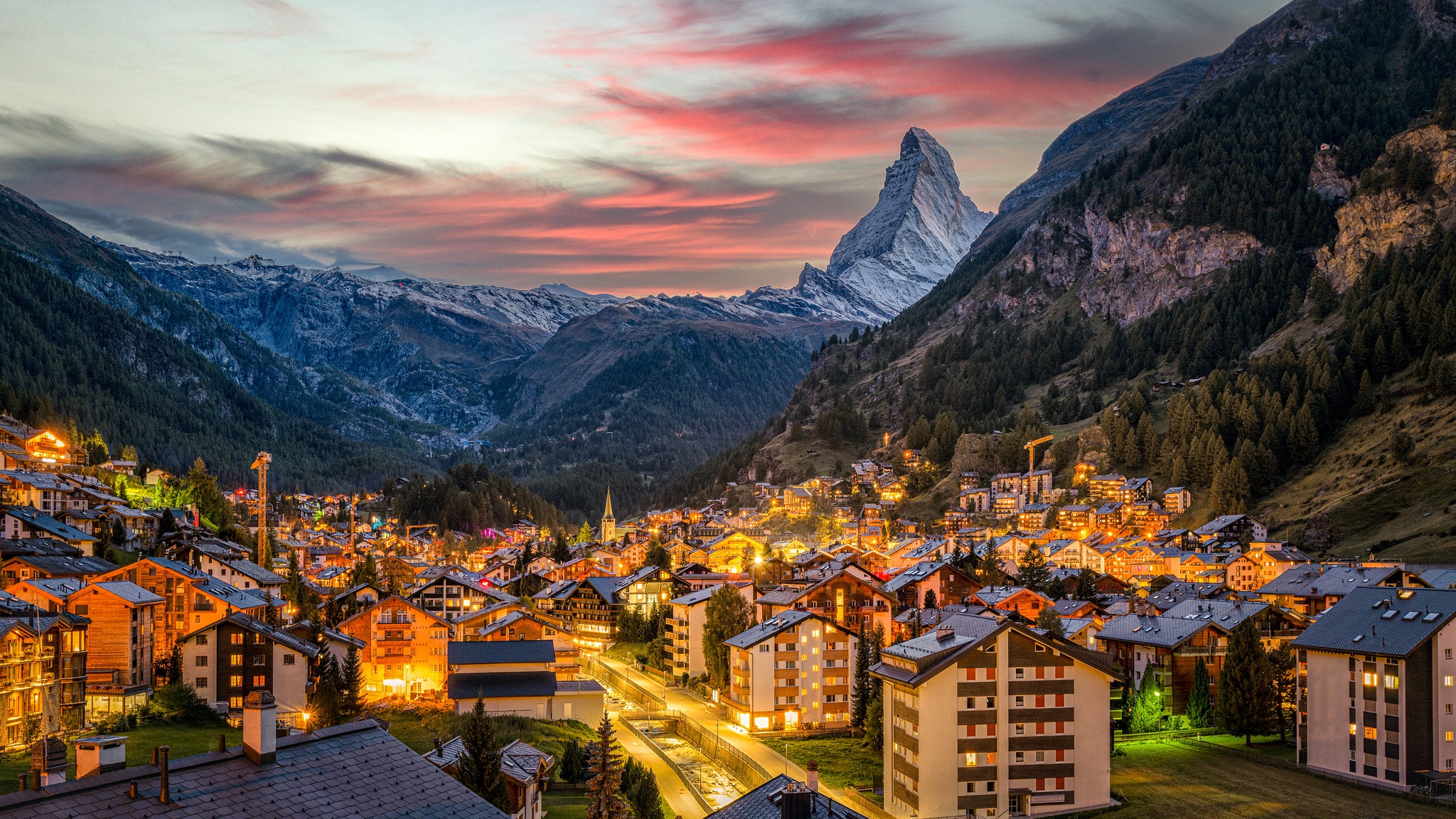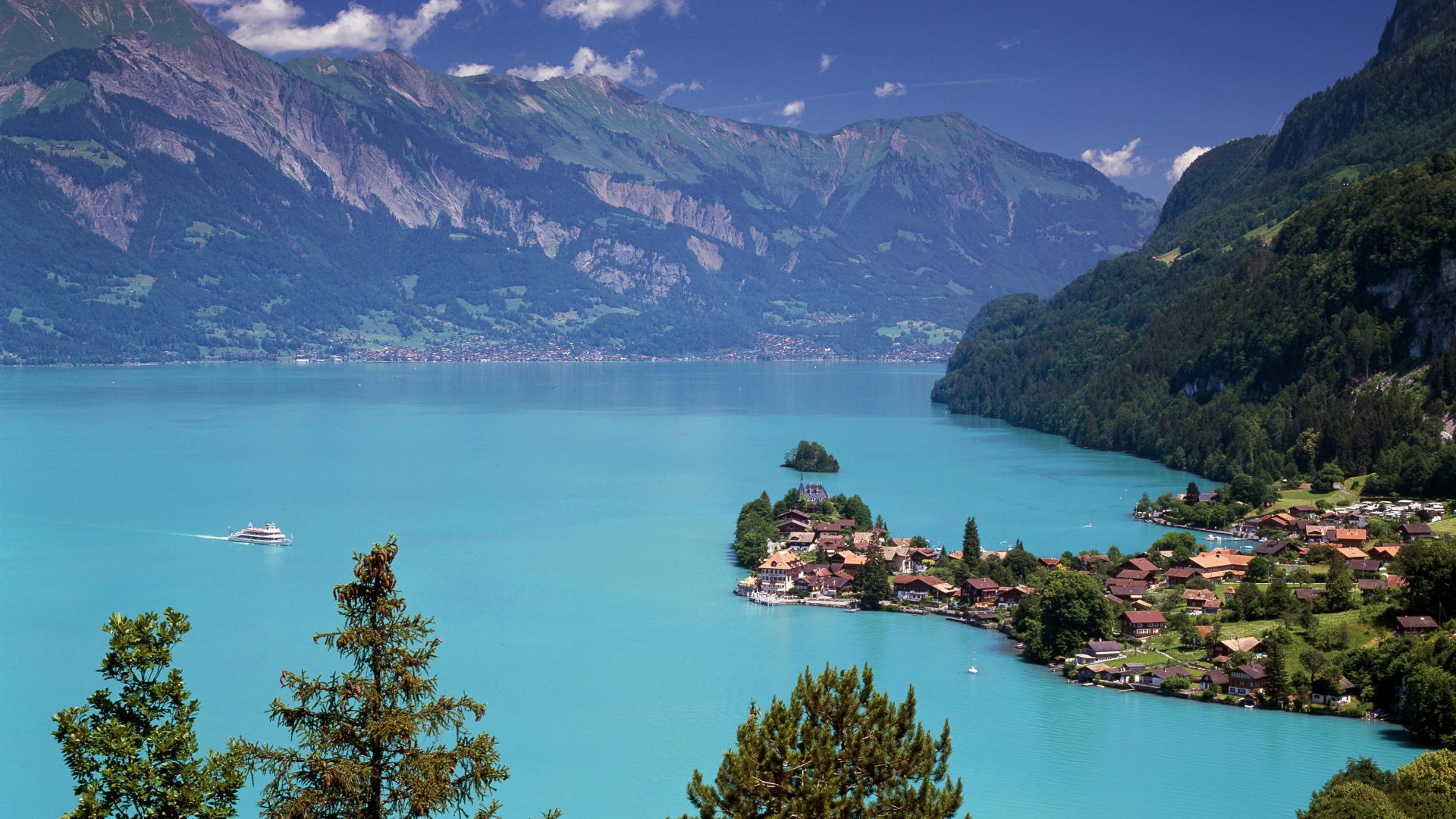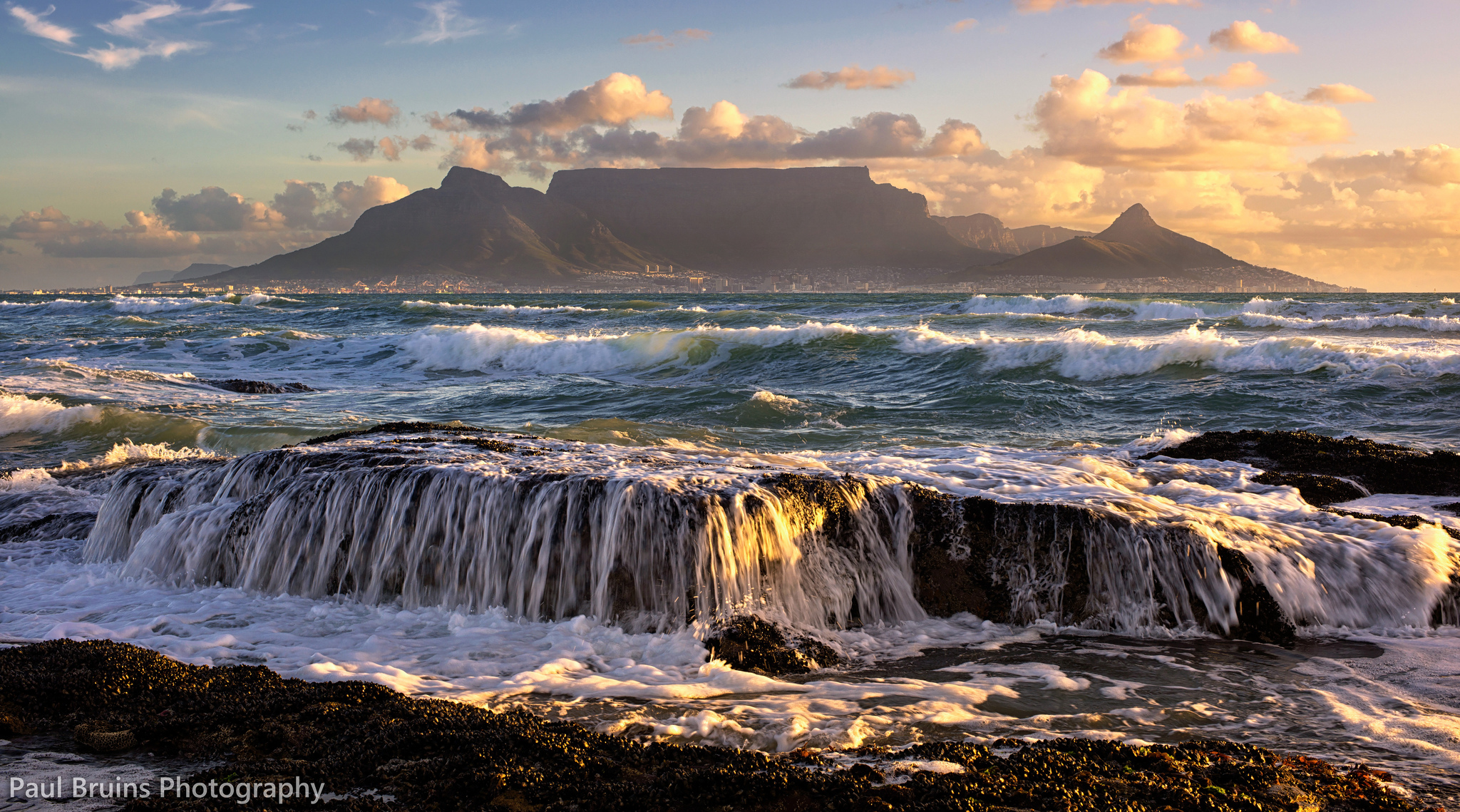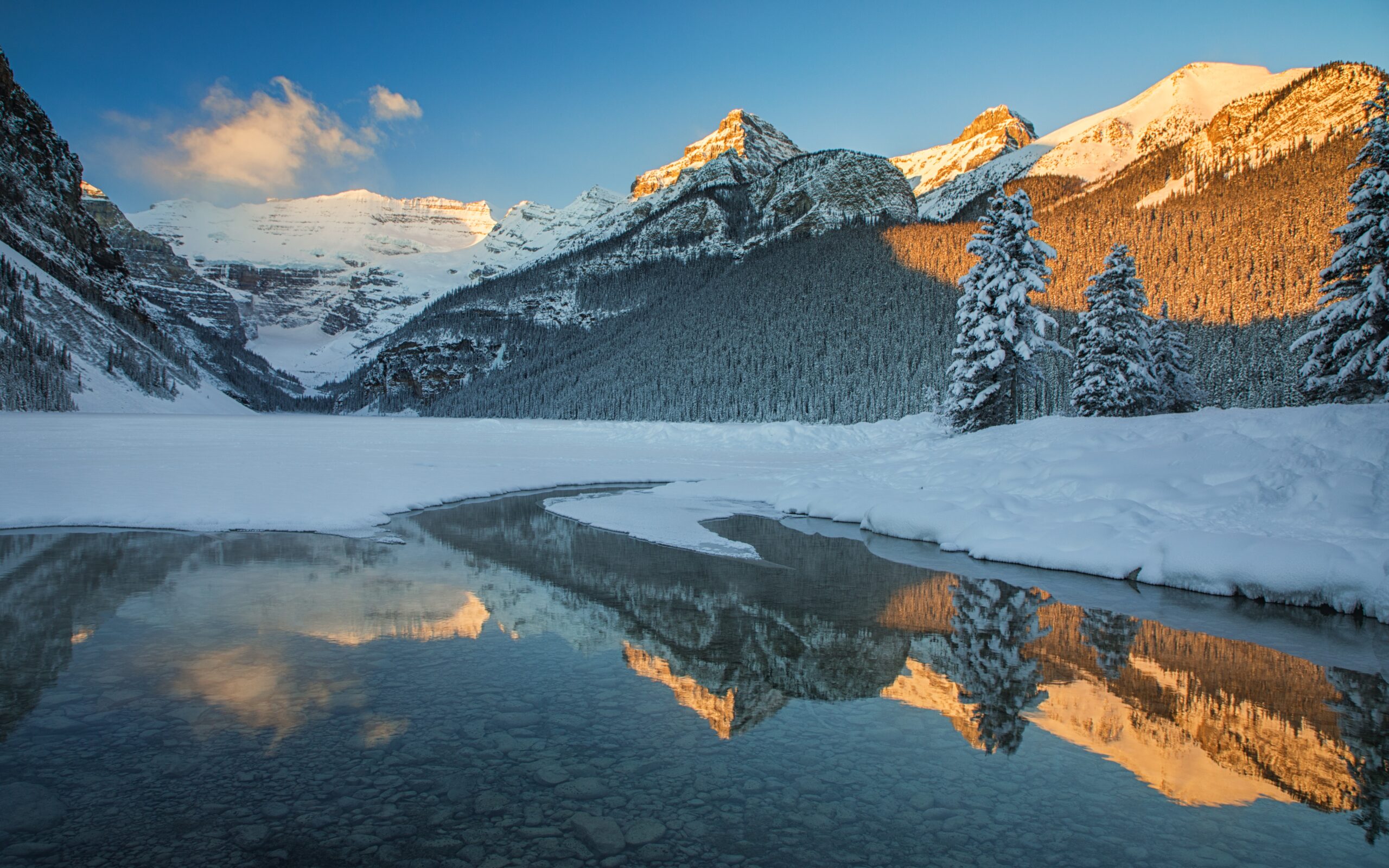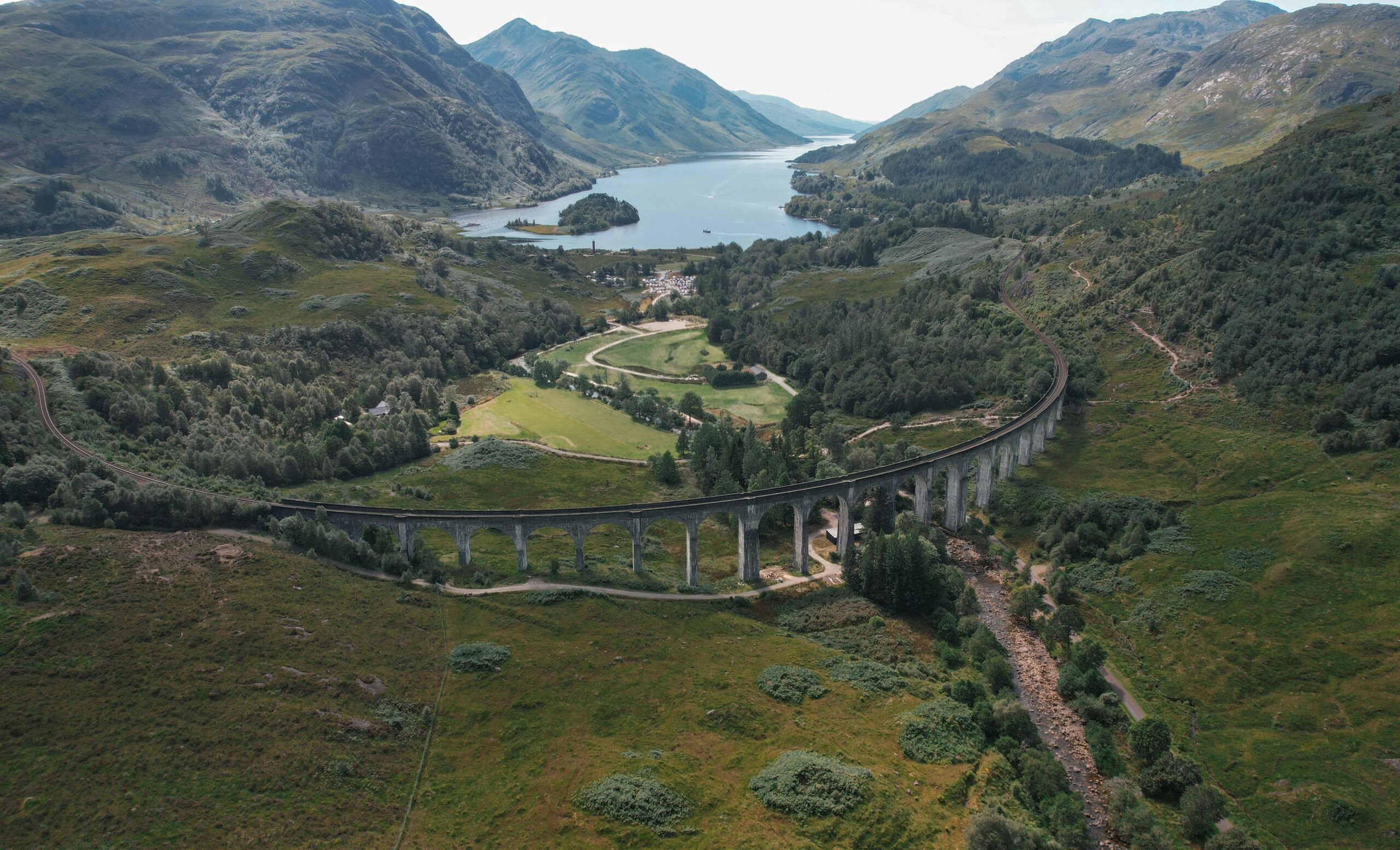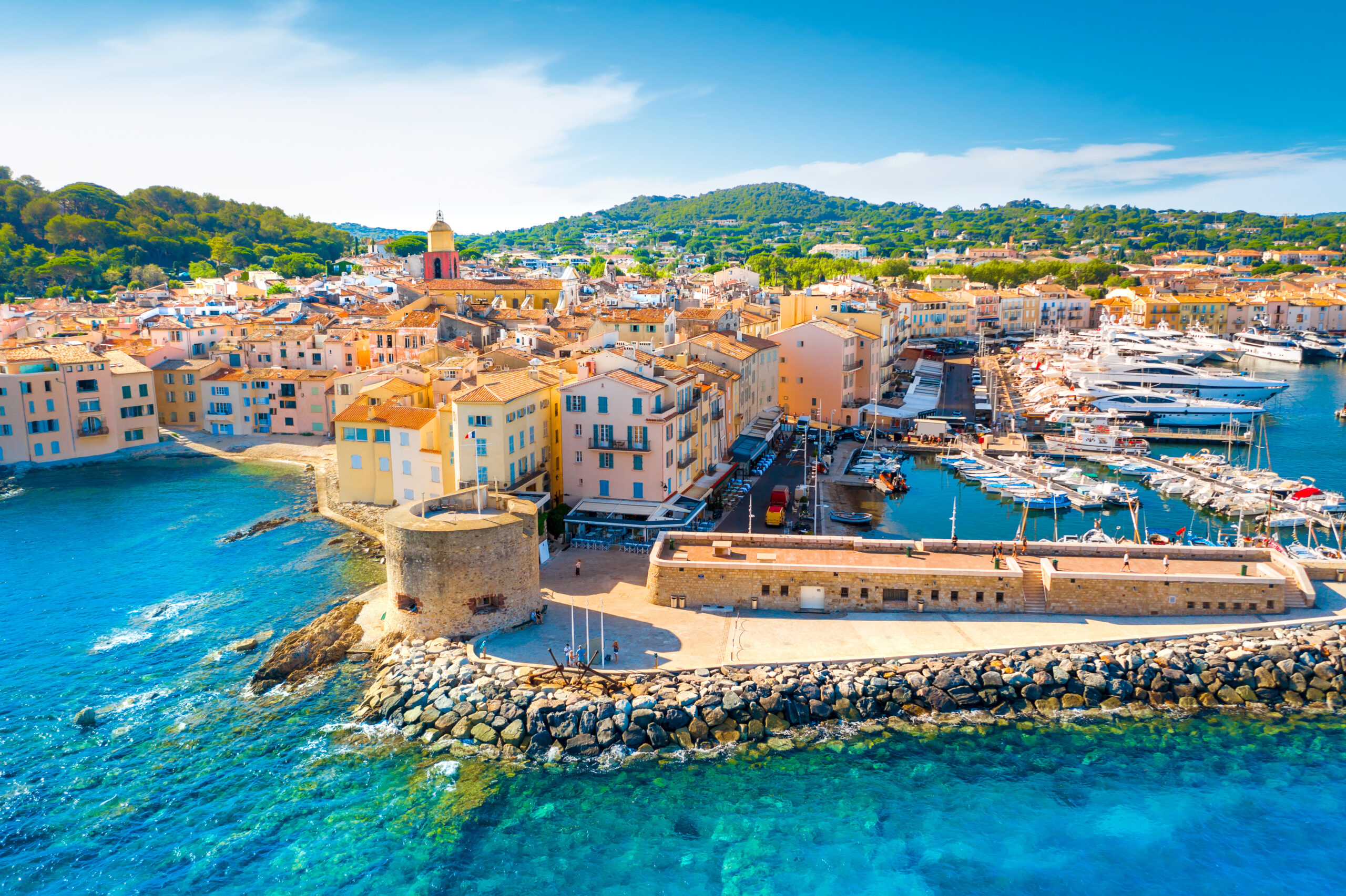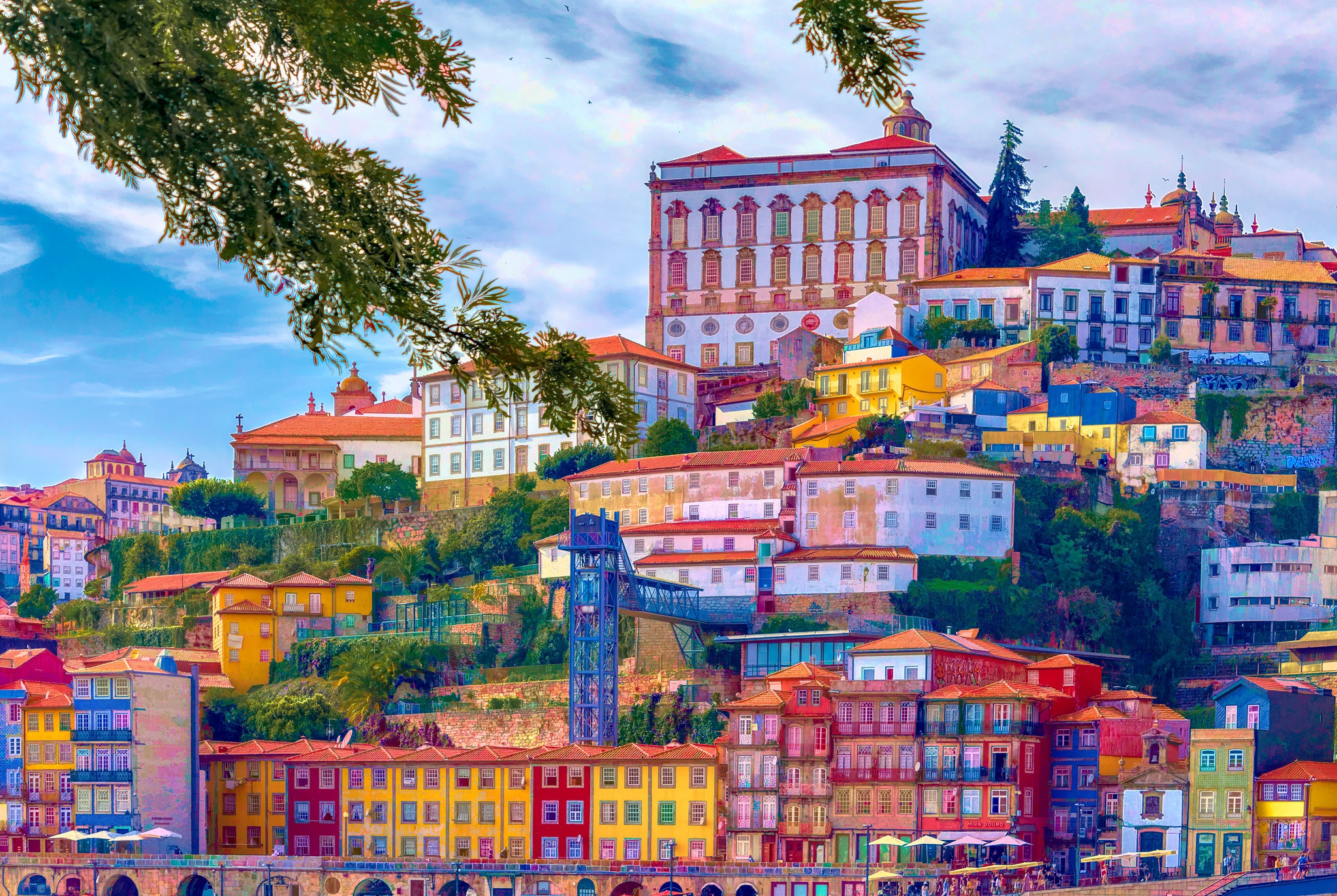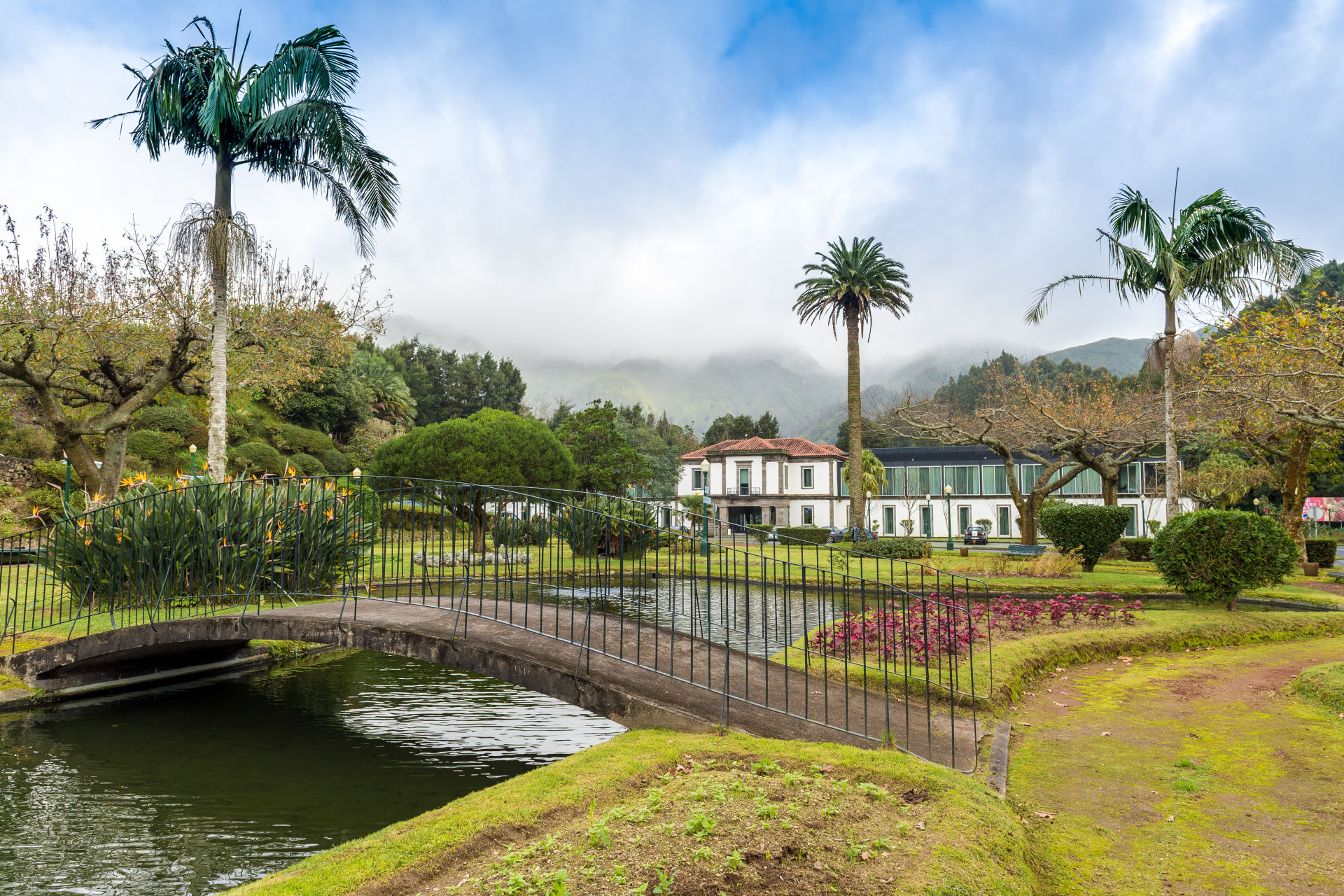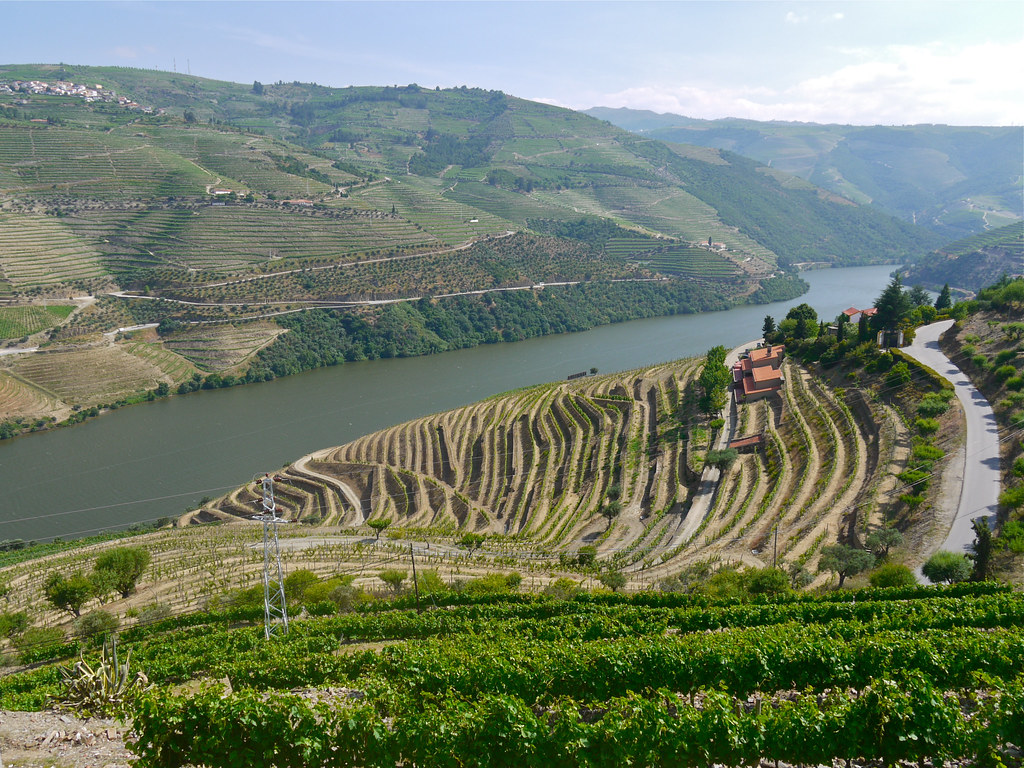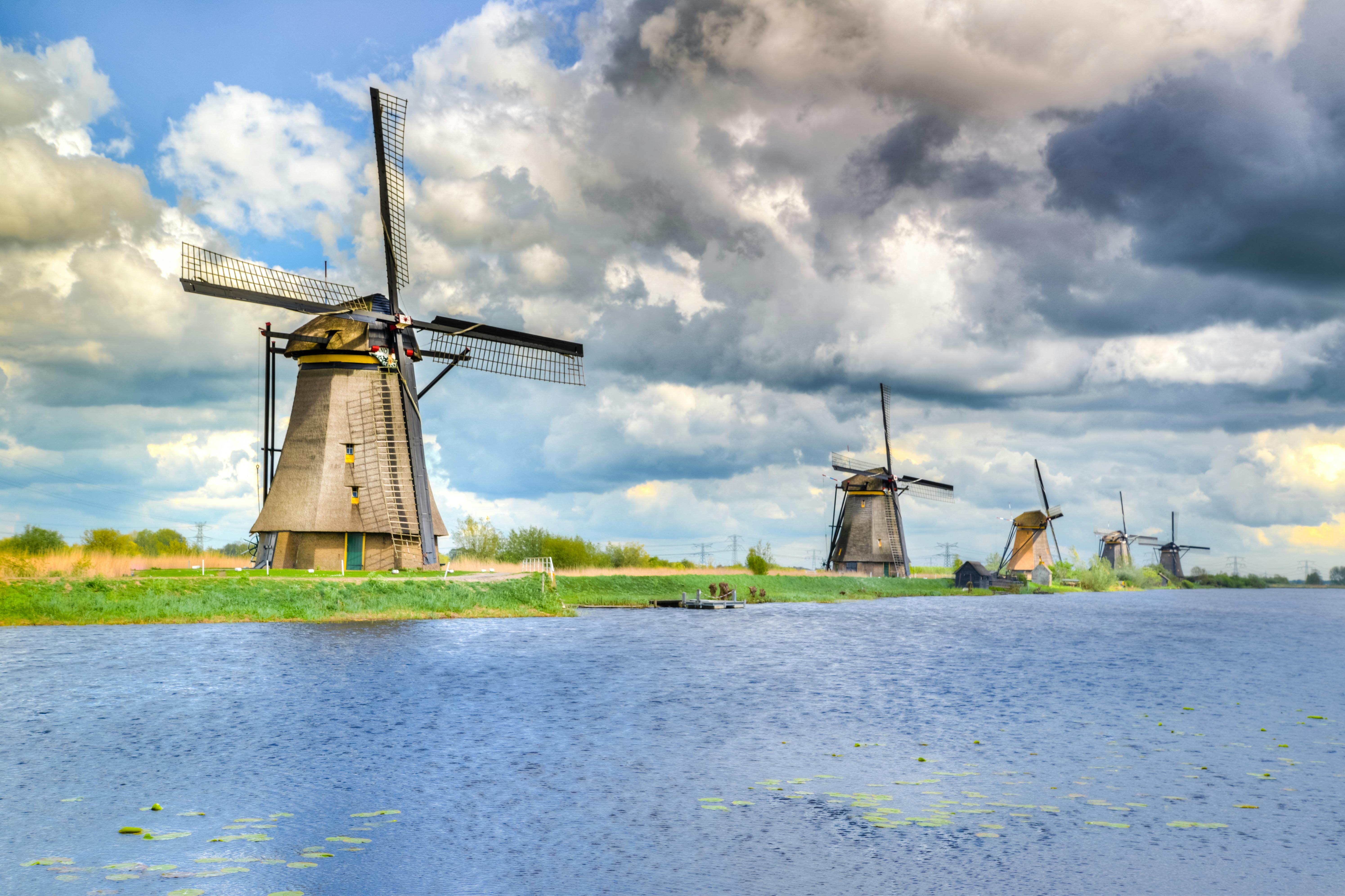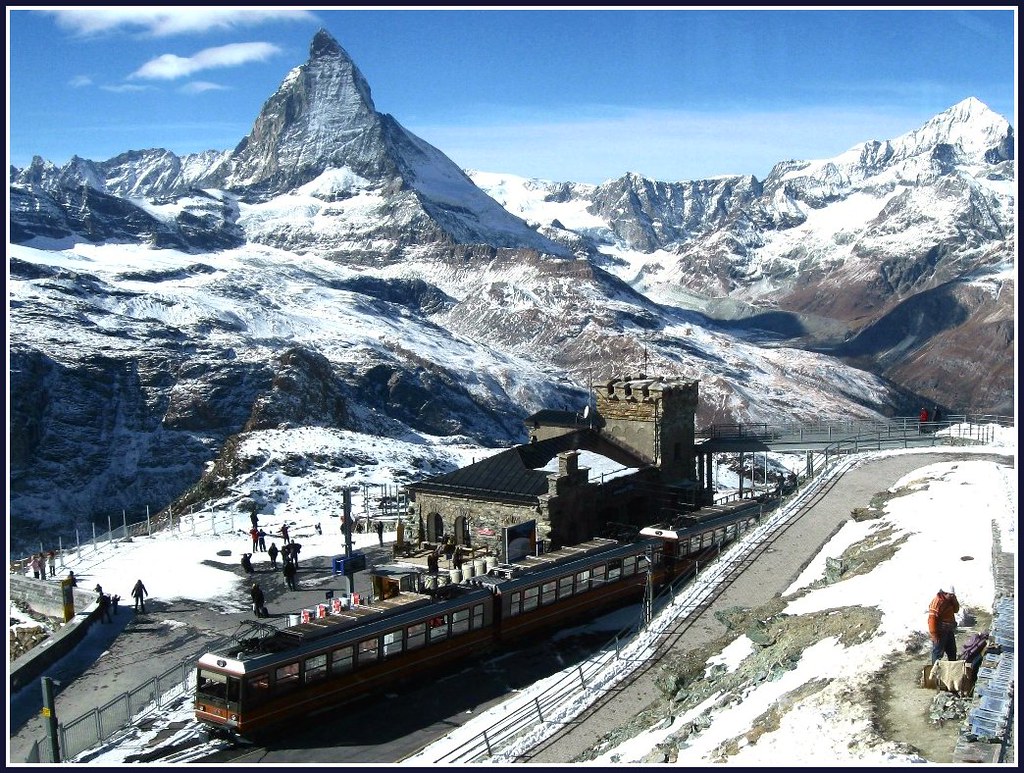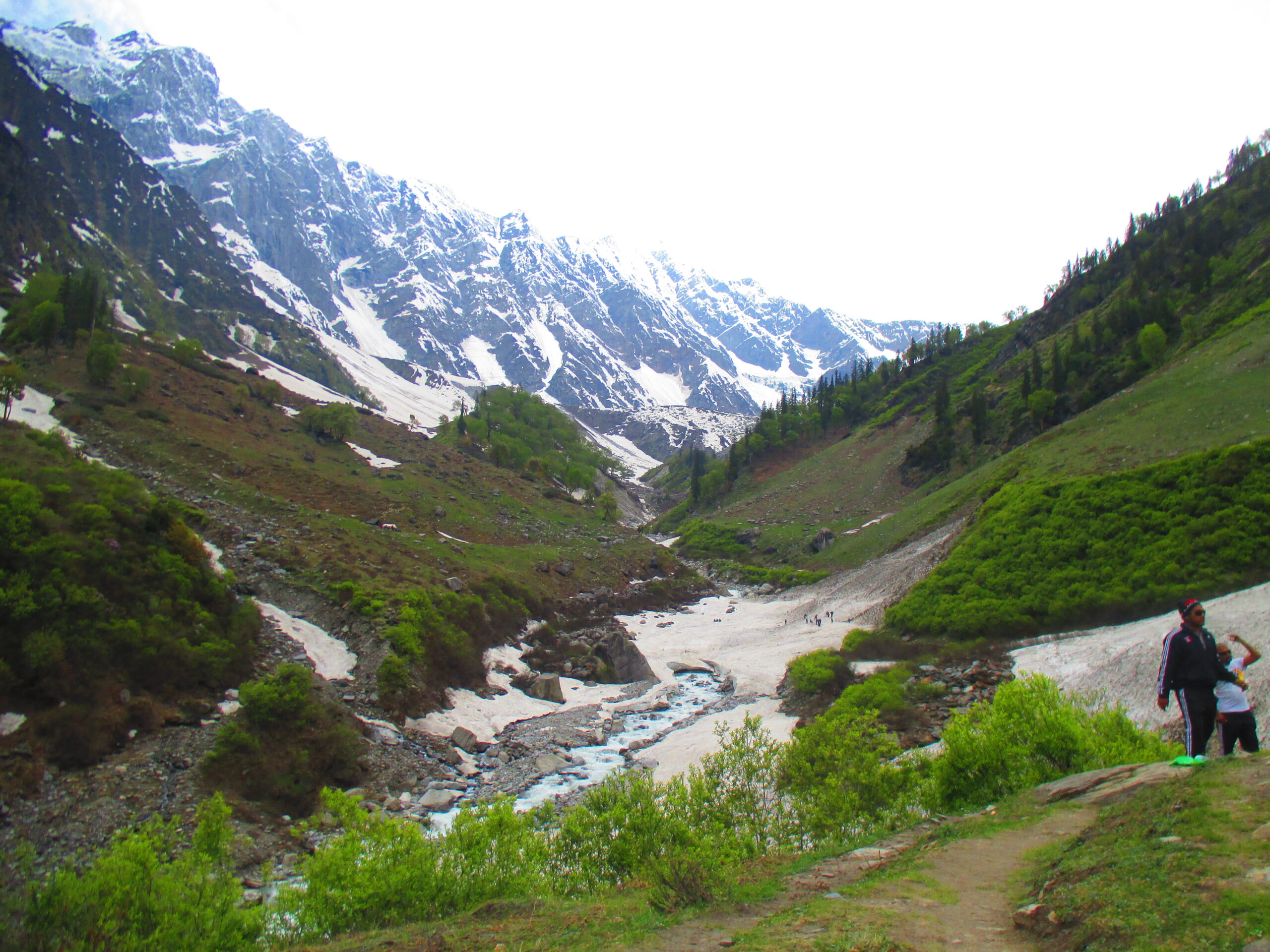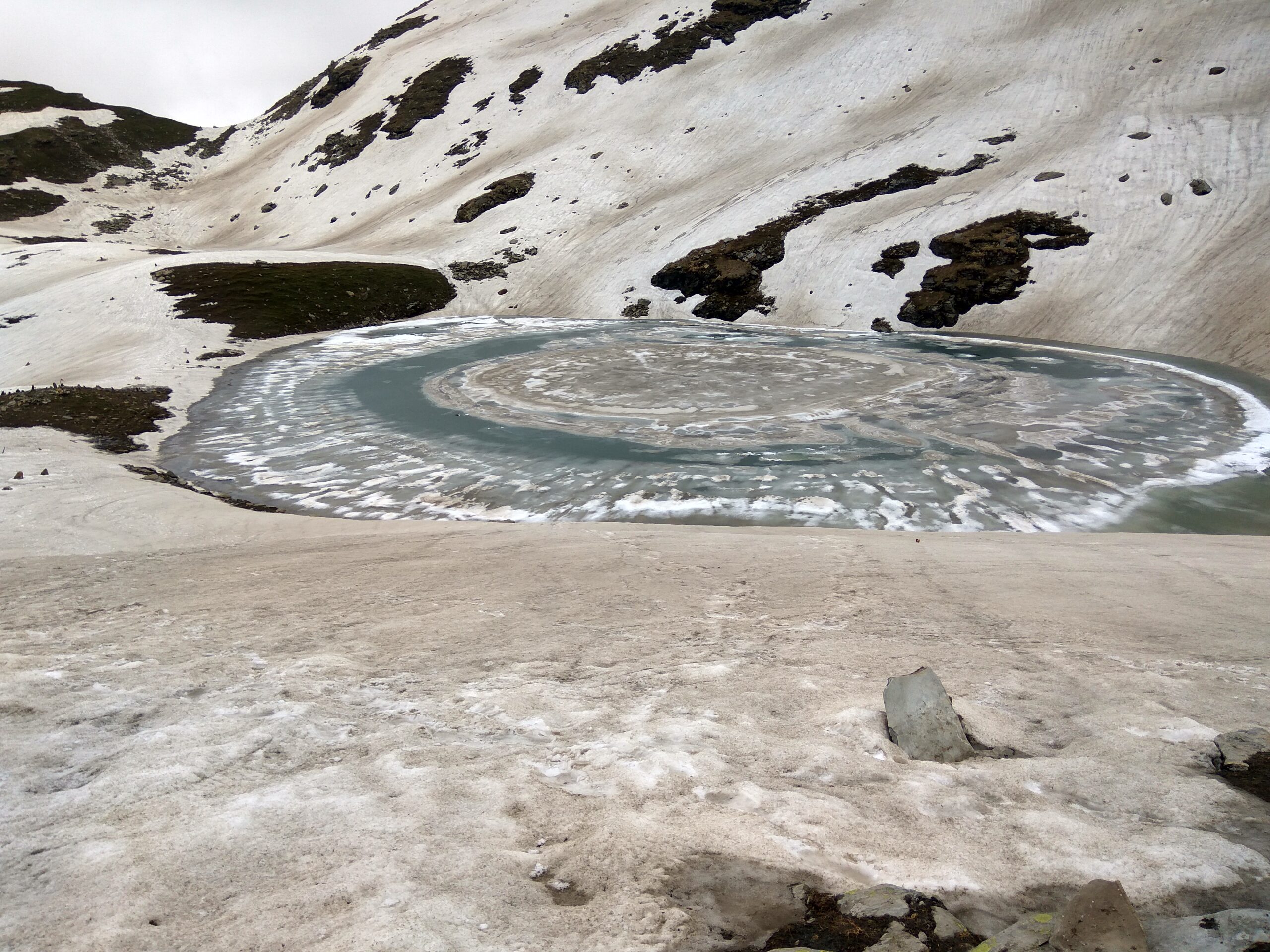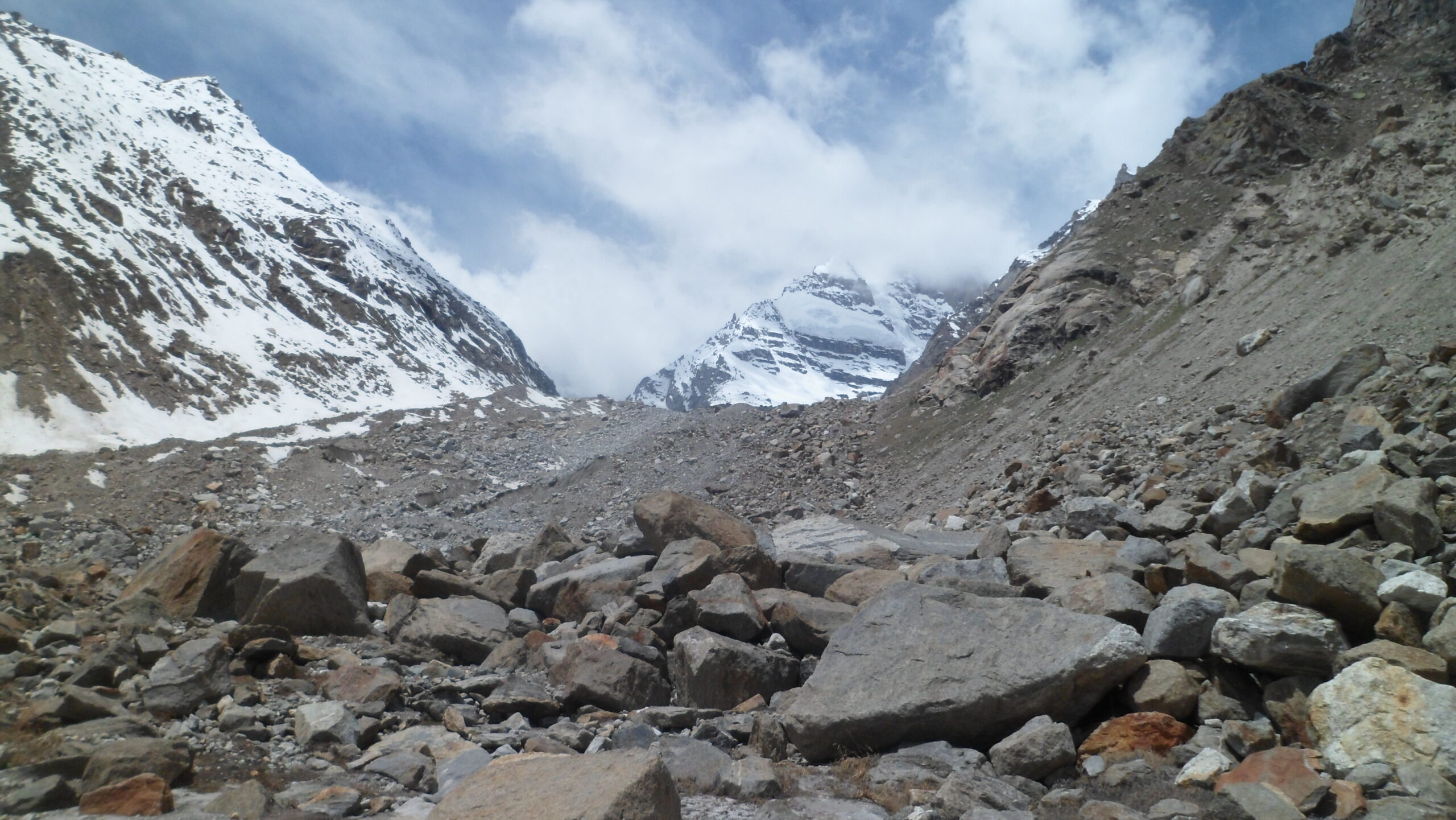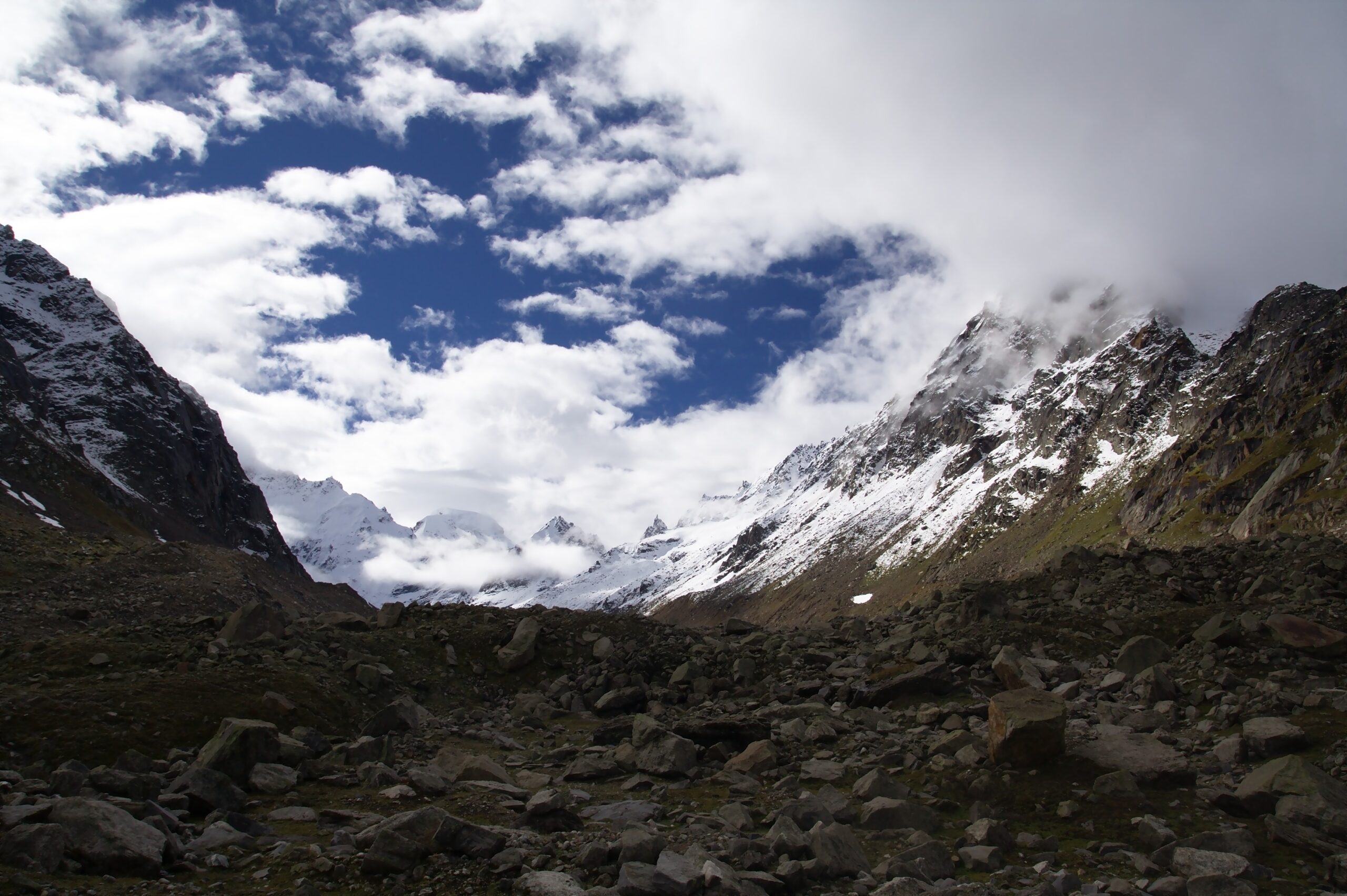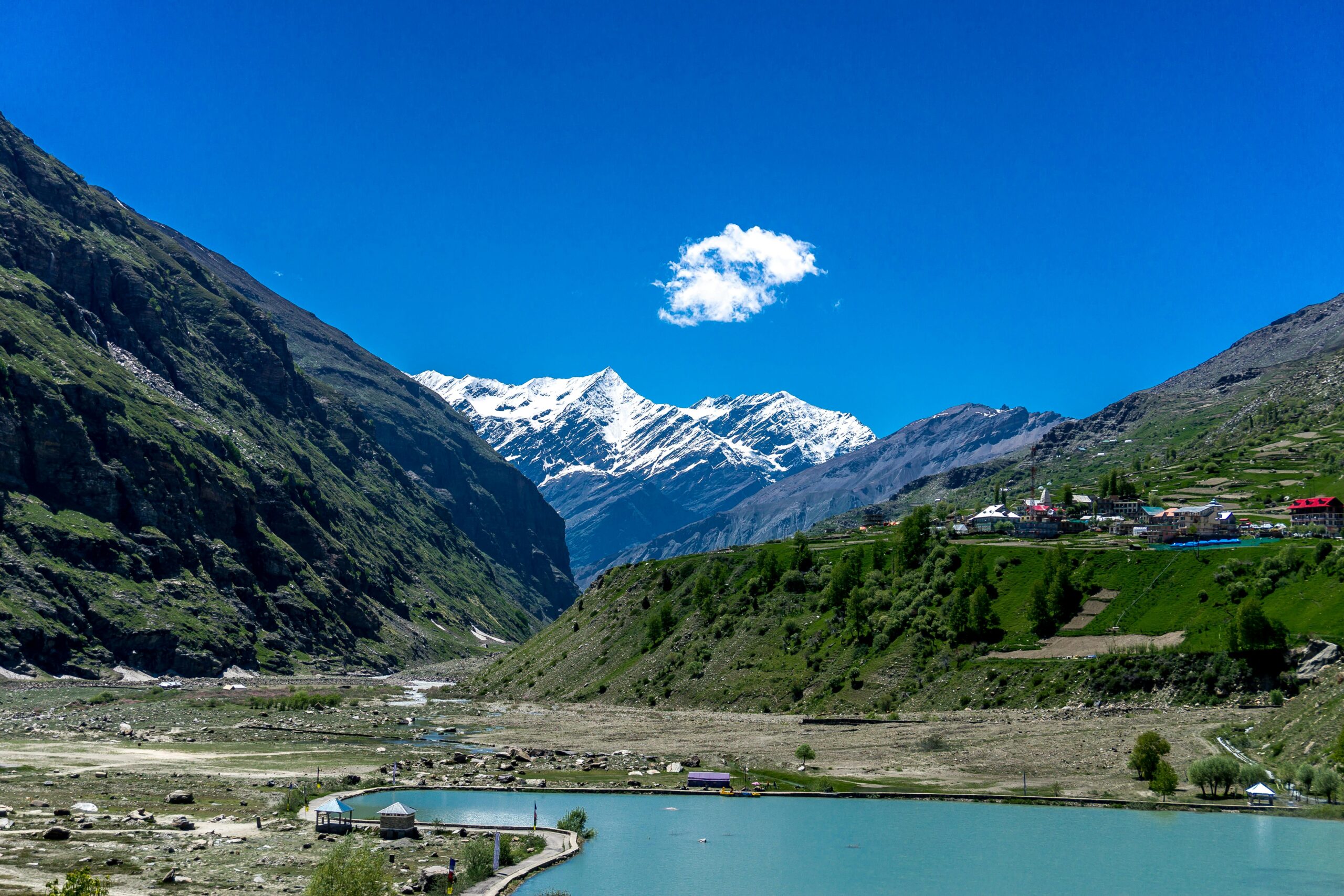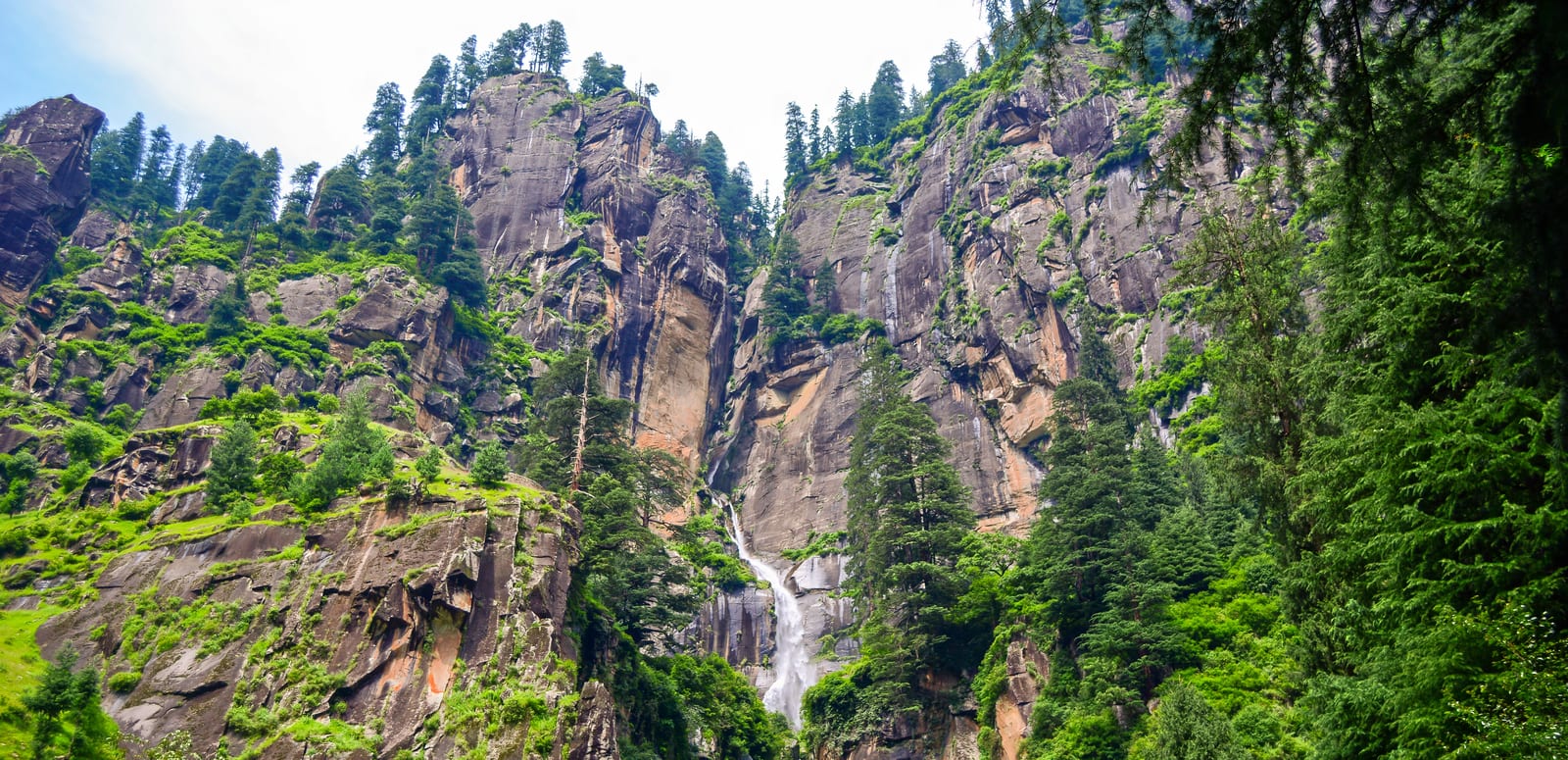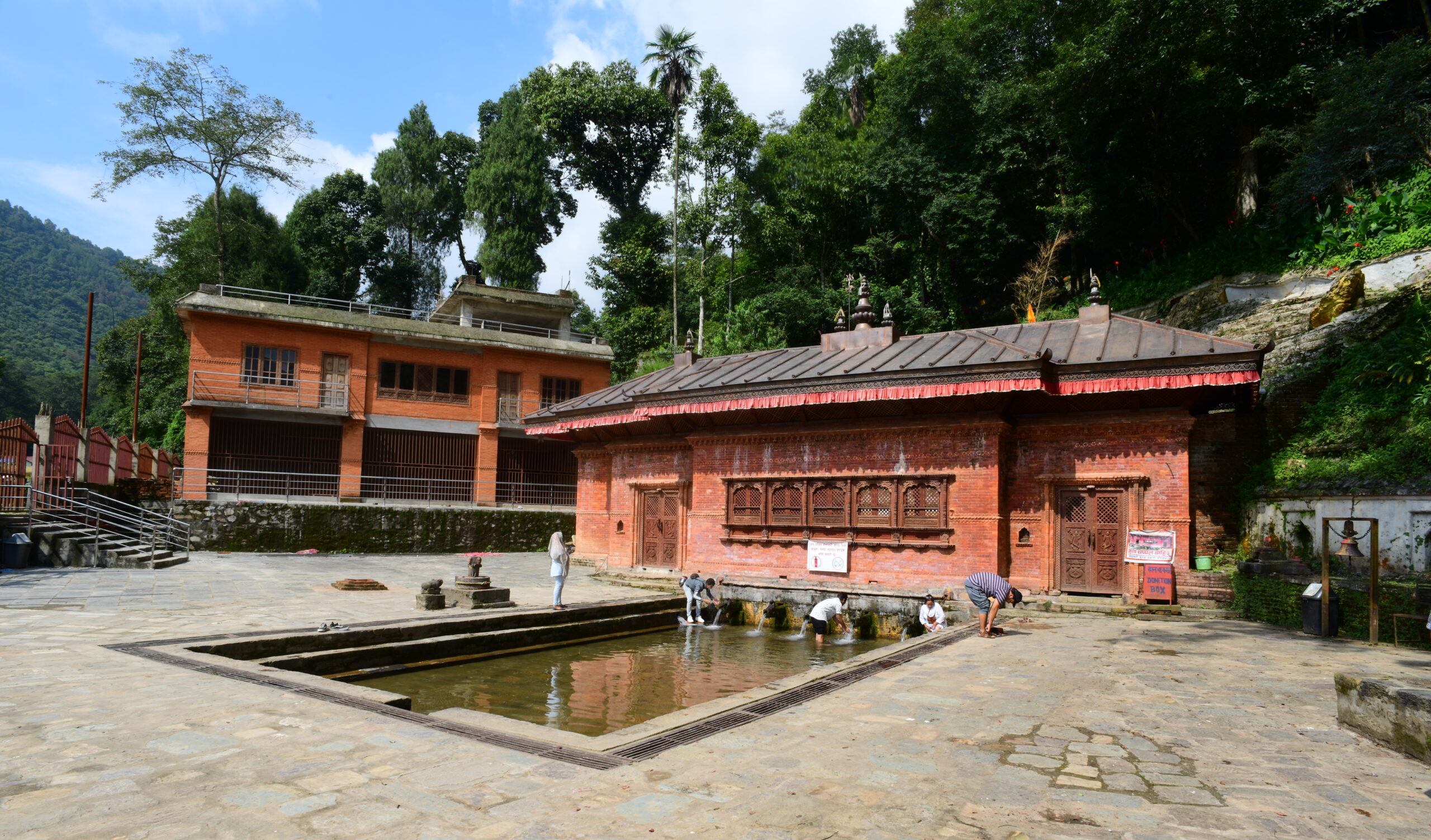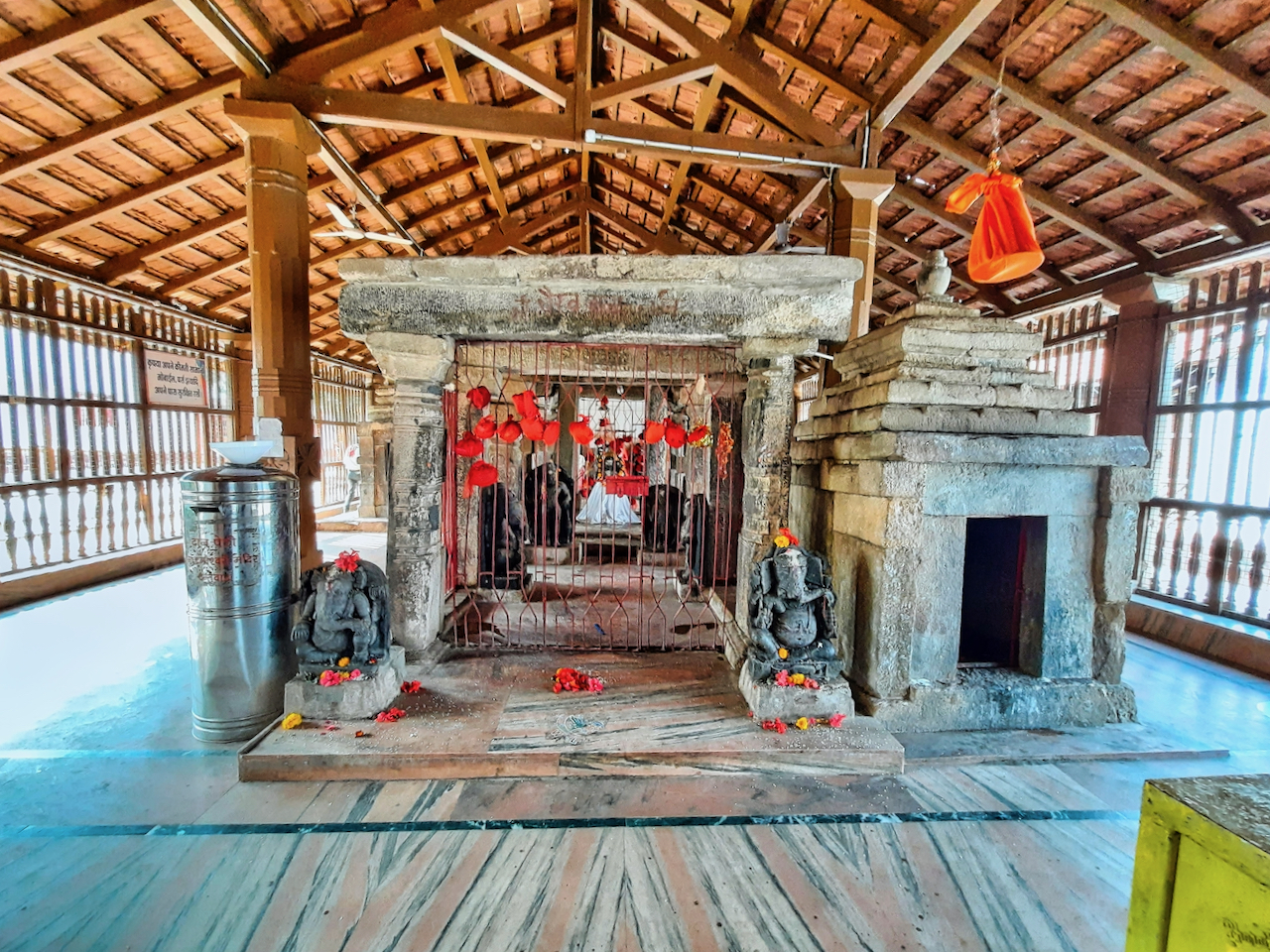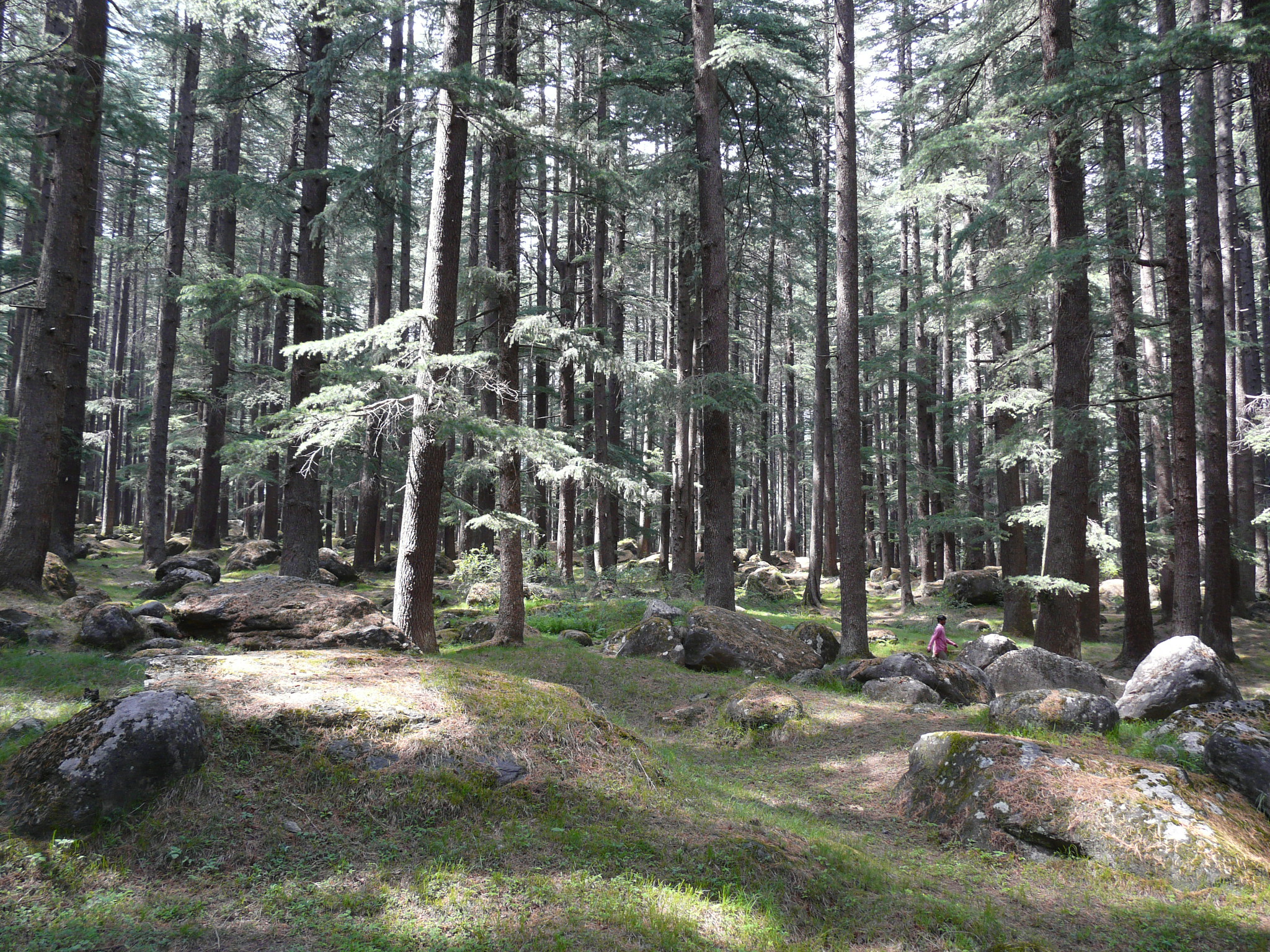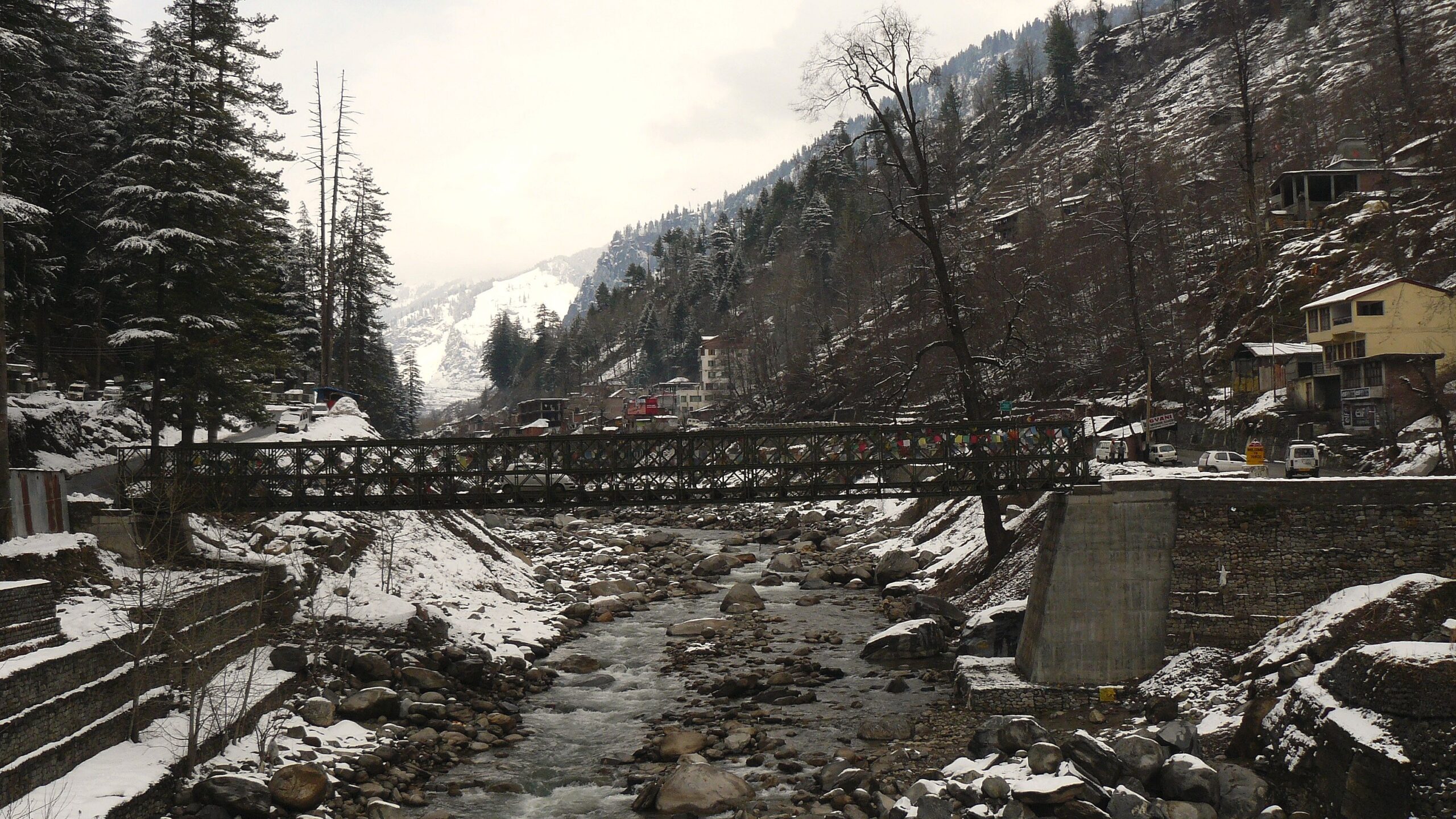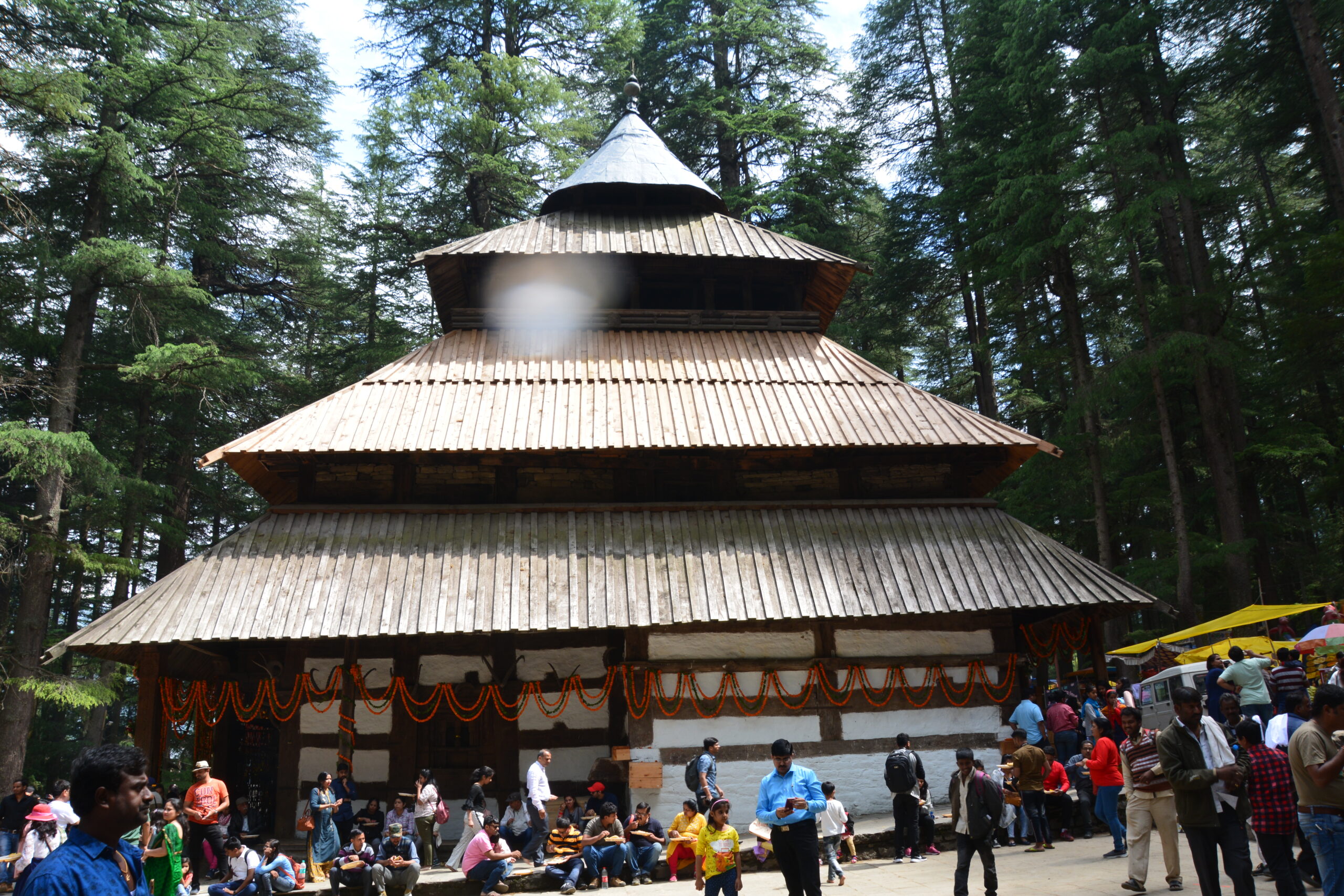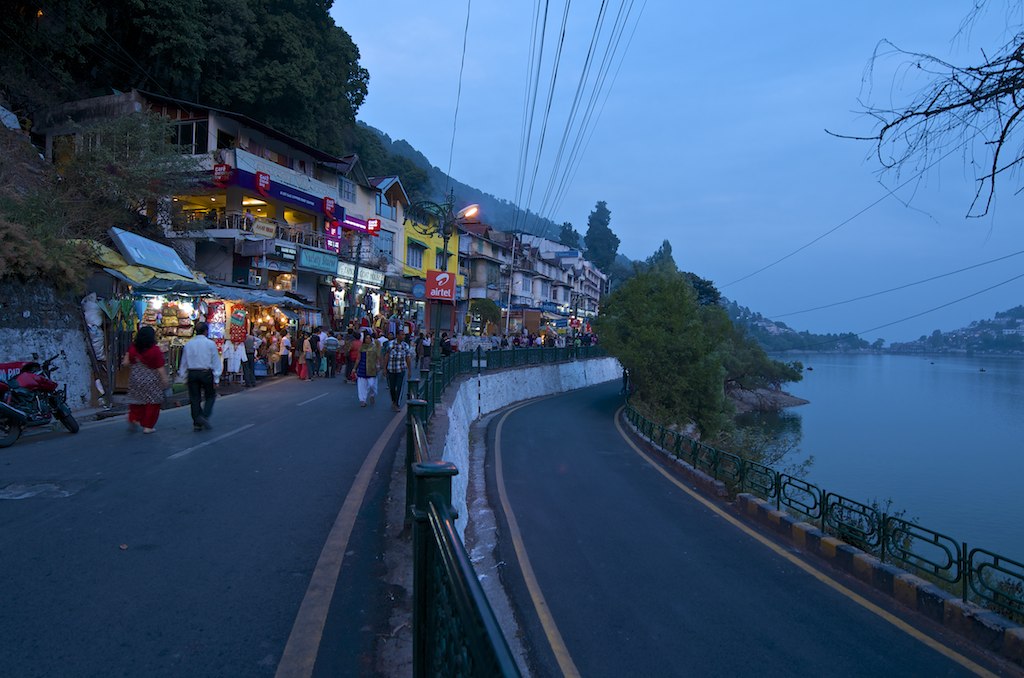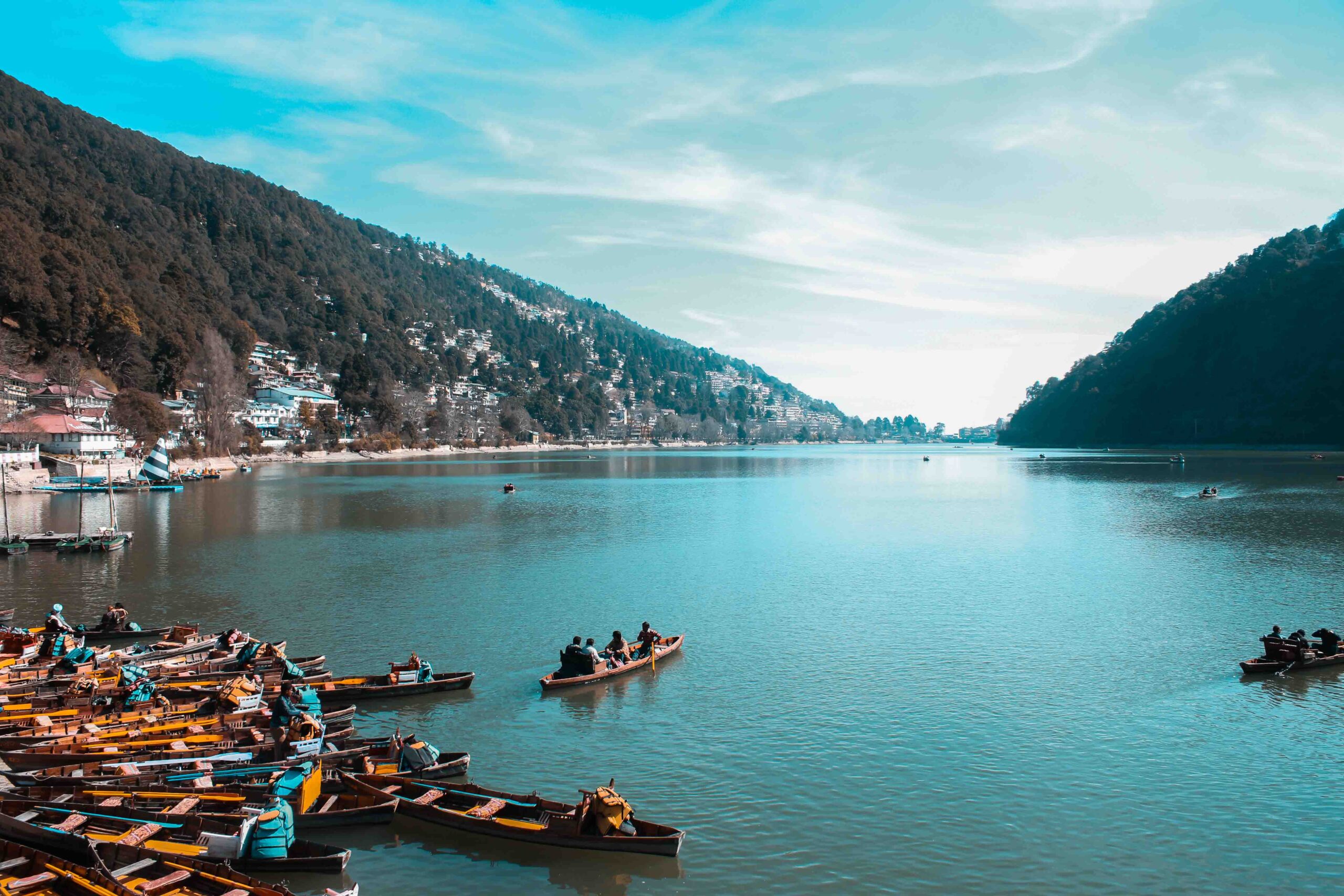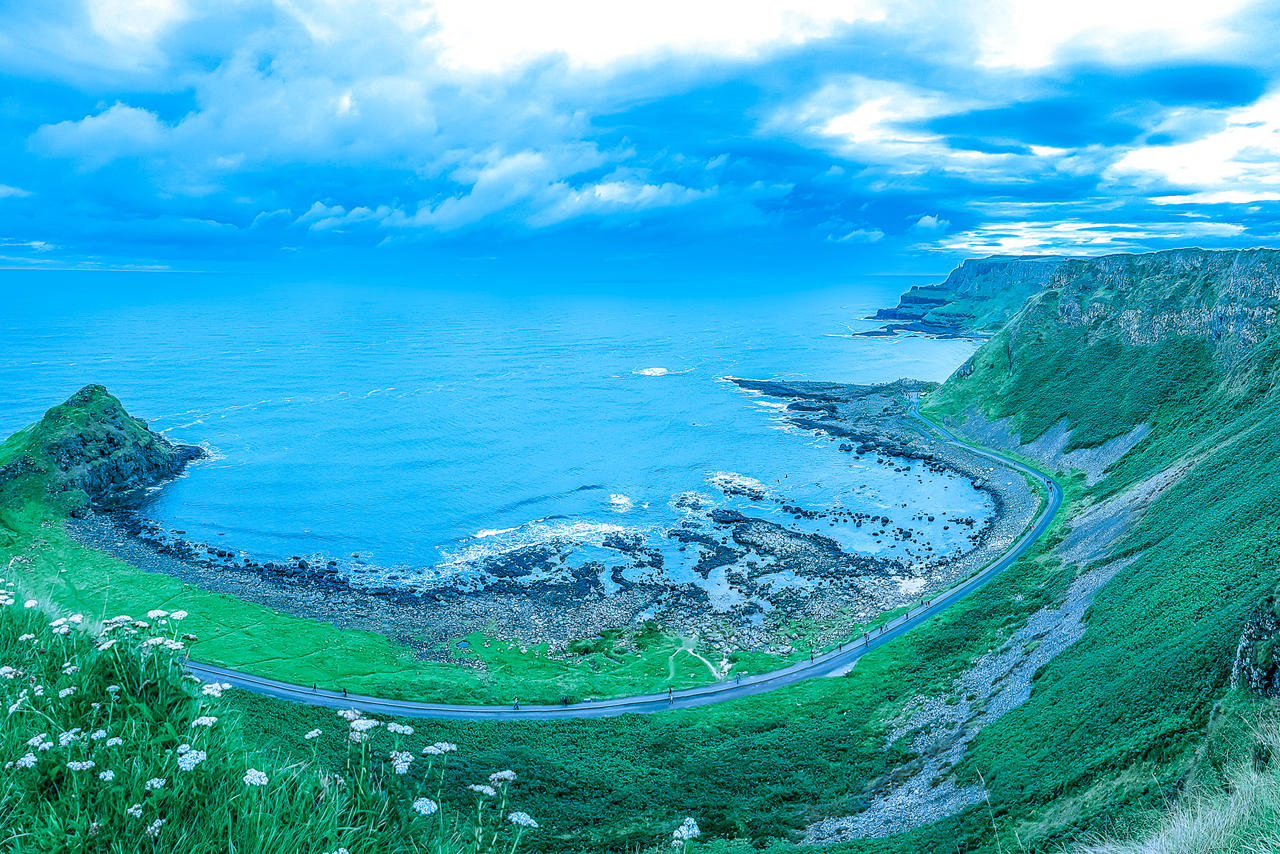
Ireland is a land of enchanting landscapes, rich history, and vibrant culture, making it home to some of the most beautiful places to visit. From the dramatic cliffs of Moher to the serene rolling hills of the Wicklow Mountains, and from the ancient ruins of Glendalough to the vibrant streets of Dublin, Ireland offers an array of stunning destinations. Whether you’re seeking breathtaking natural beauty, historical landmarks, or immersive cultural experiences, our guide to the most beautiful places to visit in Ireland will help you plan the perfect journey through this magical island.
1. Cliffs of Moher, Clare
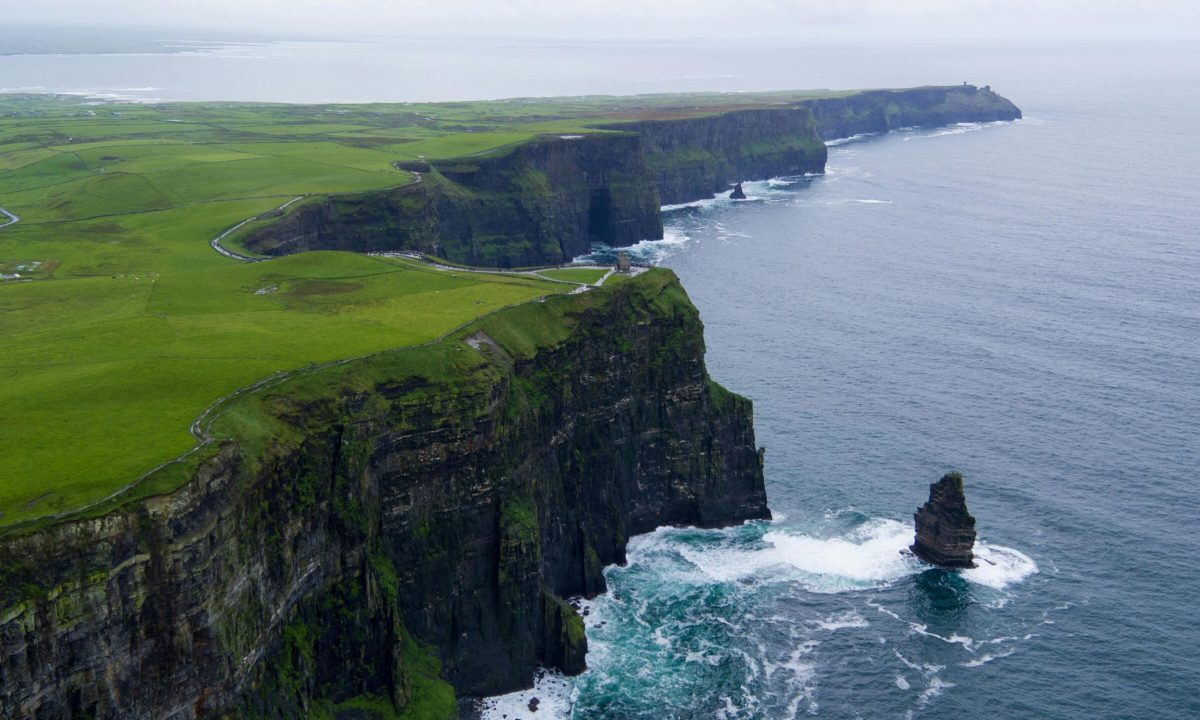
The Cliffs of Moher are undeniably one of the most beautiful places to visit in Ireland. Rising majestically from the Atlantic Ocean, they stretch over 14 kilometers and reach heights of up to 214 meters. Located in County Clare, these iconic cliffs offer breathtaking views and a memorable experience for any traveler.
- Walk the Cliffs: Engage in the exhilarating experience of walking the length of the Cliffs of Moher, capturing stunning photographs along the way.
- Bird Watching: Several species of seabirds, including puffins and razorbills, call the cliffs their home. Bring your binoculars for a closer look.
- Boat Tours: Get a different perspective by taking a boat tour from Doolin, which showcases the cliffs from the sea.
- Visit the Visitor Center: Learn about the geology, history, and local folklore associated with the cliffs through interactive exhibits.
- Yoga on the Cliffs: Join a yoga class with the cliffs as your backdrop for a serene and meditative session.
Natural Attractions
- Killarney National Park: Home to the stunning Lakes of Killarney, Torc Waterfall, and Muckross House and Gardens. This park is a haven for nature lovers.
- Gap of Dunloe: A narrow mountain pass that offers some of the most spectacular scenery in the area. Take a jaunting car ride or hike through this astounding landscape.
- Rossbeigh Beach: A beautiful sandy beach perfect for a relaxing day by the water, swimming, or even some horse riding.
Historical and Cultural Sites
- Skellig Michael: Visit this ancient monastic site, perched on a rocky island and accessible by boat. It’s an essential stop for history buffs and nature enthusiasts.
- Cahersiveen Heritage Centre: Learn about the rich history of Cahersiveen and its connection to Daniel O’Connell, one of Ireland’s greatest political leaders.
- Staigue Fort: A well-preserved Iron Age stone fort, offering insight into Ireland’s ancient past.
Towns and Villages
- Kenmare: Known for its vibrant culture, artisan shops, and excellent restaurants. Don’t miss the local craft markets and live music performances.
- Sneem: A charming village divided by the Sneem River, offering colorful houses, local pubs, and scenic spots to relax.
- Waterville: A quaint coastal village famous for its stunning views and as the summer home of Charlie Chaplin.
- Driving Tips: The Ring of Kerry is best driven counter-clockwise to avoid tour bus traffic. The roads can be narrow and winding, so drive cautiously.
- Weather Preparedness: Bring layers and waterproof clothing. Weather can be unpredictable in Ireland, so it’s best to be prepared for all conditions.
- Accommodation: Book well in advance, especially during the summer months. Bed and breakfasts are popular and provide a cozy, authentic experience.
- Local Cuisine: Savor the local delicacies such as fresh seafood, traditional Irish stews, and locally produced cheeses. Many towns along the ring have excellent pubs and restaurants.
- Photography: The route offers countless photo opportunities. Ensure to have your camera ready to capture the incredible landscapes, historic sites, and picturesque villages.
- Respect Local Communities: The Ring of Kerry passes through several small communities. Be respectful of local customs and mindful of your impact on the environment.
- Fuel Up: Gas stations are not frequent along some parts of the ring. Ensure you have a full tank before starting your journey.
In conclusion, the Ring of Kerry in County Kerry stands out as one of the most beautiful places to visit in Ireland. The combination of natural beauty, historical richness, and local charm make it a must-see destination for any traveler. Whether you’re driving, hiking, or simply relaxing, the Ring of Kerry offers an unforgettable Irish experience.
2. Ring of Kerry, Kerry
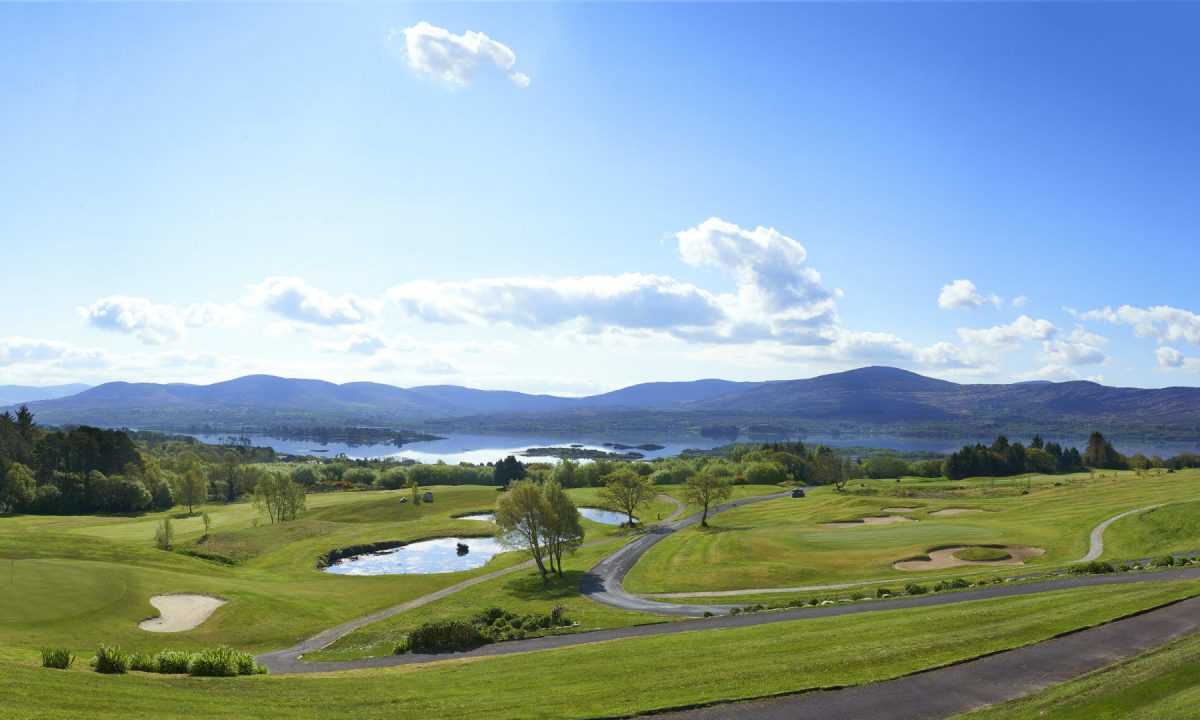
The Ring of Kerry is a world-renowned scenic drive that circles the Iveragh Peninsula in County Kerry. Renowned as one of the most beautiful places to visit in Ireland, this 179-kilometer route boasts dramatic coastal landscapes, lush mountains, and charming towns. If you’re seeking an unparalleled adventure in Ireland, the Ring of Kerry should top your list.
- Drive the Scenic Route: Embark on a journey through breathtaking landscapes including rugged coastlines, tranquil lakes, and picturesque villages. The route takes you through towns like Killarney, Kenmare, Sneem, Waterville, and Cahersiveen.
- Hiking and Walking: Explore the numerous trails, including the famous Kerry Way walking path, offering stunning views of the surrounding countryside and coastlines.
- Boat Tours: Take a scenic boat tour around the Skellig Islands, where you can see Skellig Michael, a UNESCO World Heritage Site and filming location for Star Wars.
- Cycling: Enjoy a challenging yet rewarding cycling route that allows you to take in the breathtaking vistas at a leisurely pace.
- Golfing: Play a round of golf at one of the many world-class golf courses in the area, such as Waterville Golf Links.
Natural Wonders
- Cliffs of Moher: Be sure to explore the visitor center, marked walking trails, and O’Brien’s Tower, which provides panoramic views of Galway Bay and the Aran Islands.
- The Burren: This unique limestone landscape is home to rare flora, ancient megalithic tombs, and exceptional hiking trails.
- Aillwee Cave: Discover an underground labyrinth featuring impressive stalactites and stalagmites.
Cultural Sites
- Doolin Village: Known for its traditional Irish music scene, this charming village is the perfect spot to immerse yourself in local culture.
- Dysert O’Dea Castle: A well-preserved 15th-century fortress that offers a glimpse into Ireland’s medieval history.
- Kilfenora Cathedral: Visit this historic cathedral and its famous high crosses that date back to the 12th century.
Coastal Attractions
- Doolin Cave: Home to the longest free-hanging stalactite in Europe, this cave is a marvel of nature.
- Liscannor: A picturesque coastal village known for its connection to the Cliffs of Moher and historical Lisconnor Castle.
- Lahinch Beach: Spend time at this popular surfing destination with golden sands and vibrant waves.
- Best Time to Visit: The Cliffs of Moher are best enjoyed in late spring and early autumn when the weather is mild and the crowds are smaller. Early morning or late afternoon visits can offer quieter, more intimate experiences.
- Weather Preparedness: The weather can be unpredictable, so bring layers and waterproof clothing. The cliffs can be windy, so dress accordingly.
- Safety First: Stay on the marked trails and adhere to safety warnings. The cliffs are steep and the winds can be strong.
- Parking: Consider using the shuttle services from nearby villages like Doolin and Liscannor to avoid parking hassles.
- Accommodation: Book your stay in advance, especially during peak tourist seasons. Traditional Irish bed and breakfasts offer a cozy and authentic experience.
- Local Cuisine: Don’t miss tasting the local seafood and traditional dishes at nearby pubs and restaurants in Doolin and Liscannor.
- Sustainable Tourism: Help preserve the natural beauty of the Cliffs of Moher by minimizing waste, sticking to the trails, and respecting wildlife habitats.
In conclusion, the Cliffs of Moher in Clare are a must-visit destination among the most beautiful places to visit in Ireland. Whether you’re drawn by the natural beauty, cultural richness, or adventurous activities, this incredible location will leave you with unforgettable memories.
3. Giant's Causeway, Antrim
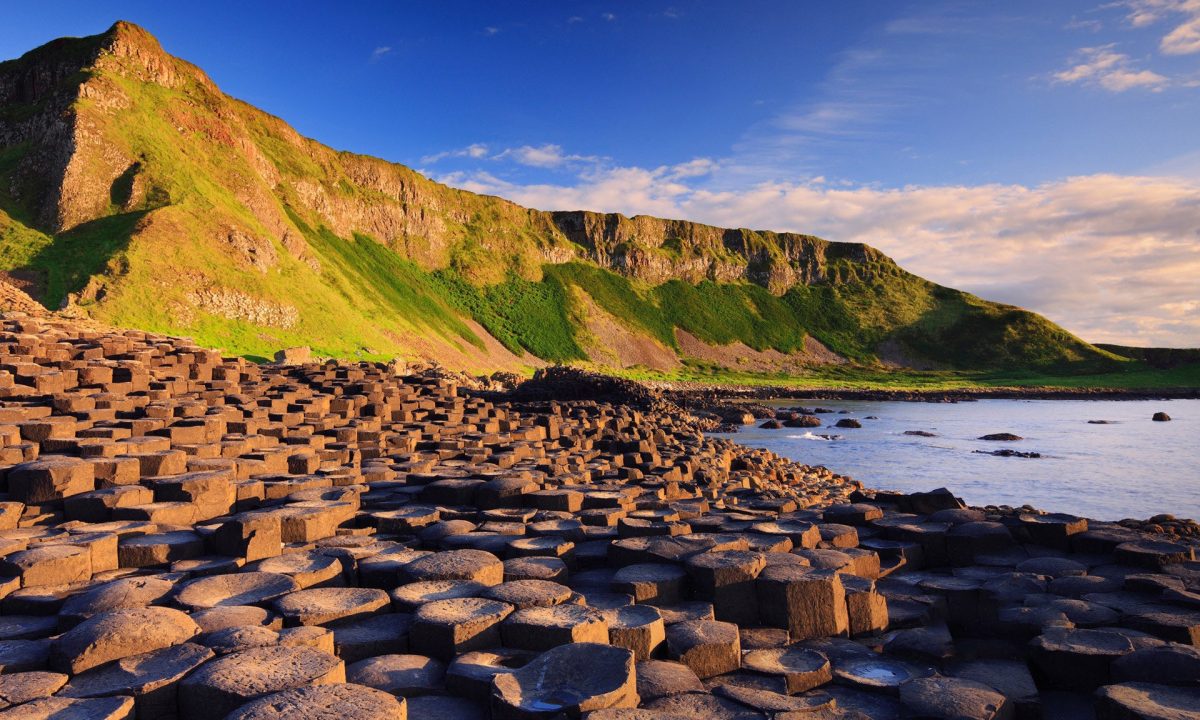
The Giant’s Causeway in County Antrim is a site of immense natural beauty and geological wonder, making it one of the most beautiful places to visit in Ireland. This UNESCO World Heritage Site is famed for its unique hexagonal basalt columns that were formed by volcanic activity around 60 million years ago. The combination of myths, history, and stunning scenery make Giant’s Causeway a must-visit destination.
- Explore the Basalt Columns: Walk among the 40,000 interlocking basalt columns and feel the awe inspired by this natural phenomenon. Each column is unique, and the formation resembles a giant staircase leading into the sea.
- Visit the Visitor Centre: Learn about the geology, mythology, and history of the Giant’s Causeway through interactive exhibits and audio-visual displays.
- Take a Guided Tour: Engage with expert guides who can enrich your visit with stories and insights about the formation and significance of the Giant’s Causeway.
- Bushmills Distillery: Just a short drive away, this is the oldest working distillery in Ireland. Enjoy a guided tour and tasting of their famous whiskey.
- Hiking and Walking: Follow the various trails that offer spectacular views of the coastline and surrounding landscapes. The Clifftop Experience is particularly popular for its stunning vistas.
Natural Attractions
- Carrick-a-Rede Rope Bridge: This thrilling rope bridge connects the mainland to a tiny island. The walk across offers exhilarating views of the coastline and the Atlantic Ocean.
- Dunluce Castle: Perched on a cliff edge, this dramatic medieval castle offers both historical intrigue and panoramic sea views.
- Ballintoy Harbour: A picturesque harbor that has featured in numerous films and TV shows, including Game of Thrones. It’s an ideal spot for a peaceful walk.
Historical and Cultural Sites
- Bushmills Village: Explore this quaint village known for its charming streets and the historic Bushmills Distillery.
- Mussenden Temple: Located near the edge of a cliff, this architectural gem offers breathtaking views of the sea and surrounding countryside.
- Hezlett House: Visit this 17th-century thatched cottage for a glimpse into Ireland’s past. It’s one of the oldest traditional houses still standing in Northern Ireland.
Coastal Attractions
- Whitepark Bay: A serene beach that offers a fantastic backdrop for leisurely walks and photography.
- Portbraddon: A small and picturesque hamlet close to the Giant’s Causeway, known for its serenity and beautiful coastal views.
- Runkerry Beach: Ideal for a relaxing stroll, this beach is close to the Giant’s Causeway and offers stunning seascapes.
- Best Time to Visit: To avoid the crowds, visit early in the morning or later in the evening. Sunset views from the causeway can be particularly spectacular.
- Weather Preparedness: The weather can change quickly in this region. Wear layers, bring a raincoat, and don’t forget sturdy walking shoes as the basalt columns can be slippery.
- Safety First: Stick to the marked paths and be cautious when walking on the columns, especially when they are wet.
- Parking and Accessibility: The Visitor Centre offers ample parking, but it can fill up quickly during peak times. Consider arriving early or using public transportation.
- Photography Tips: The Giant’s Causeway is incredibly photogenic. For the best shots, visit during the golden hours of sunrise or sunset when the light is softer and more flattering.
- Local Cuisine: Enjoy fresh seafood and traditional Irish dishes at local pubs and restaurants in the nearby towns. The Bushmills Inn is a popular choice.
- Environmental Responsibility: Preserve the beauty of the Giant’s Causeway by taking your rubbish with you and sticking to the designated pathways to prevent erosion.
- Accommodations: There are numerous lodging options ranging from cozy bed and breakfasts to luxury hotels in the nearby towns of Bushmills and Portrush.
In summary, the Giant’s Causeway in Antrim stands as a prime example of the most beautiful places to visit in Ireland. Its unique geological formations, coupled with the rich cultural heritage and natural beauty of the surrounding area, make it a compelling destination for travelers of all types. Whether you’re into hiking, history, or simply soaking in stunning landscapes, the Giant’s Causeway offers an unforgettable experience.
4. Dublin
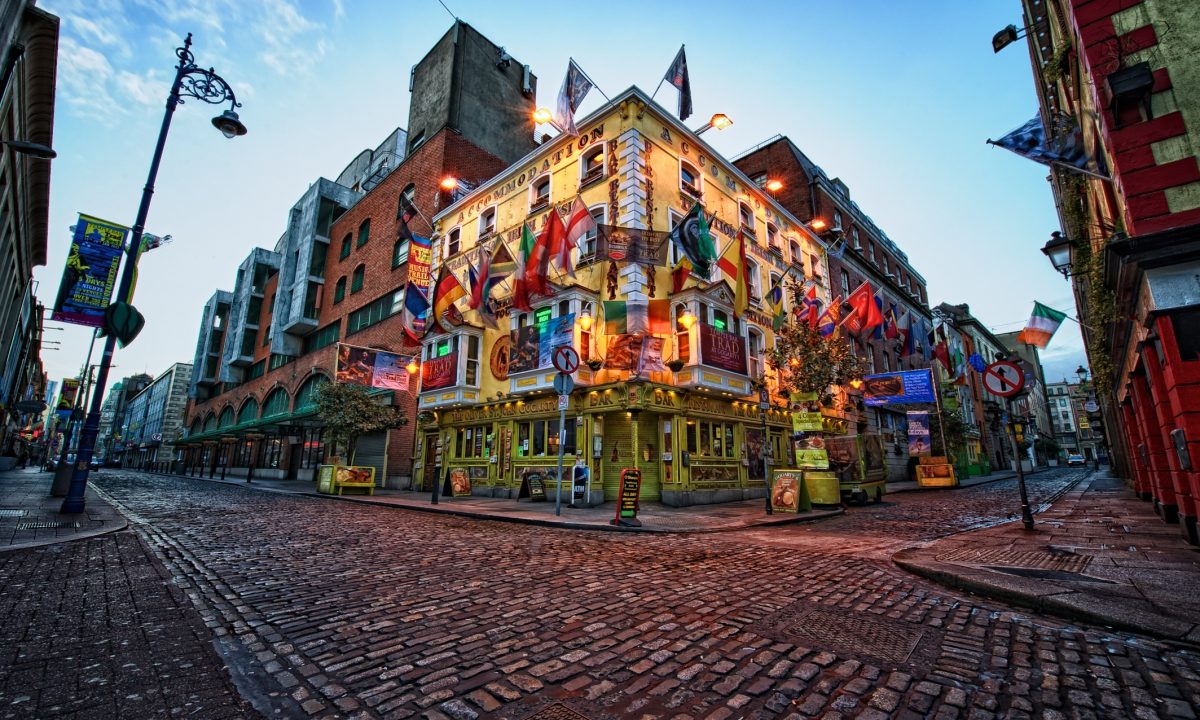
Dublin, the capital of Ireland, is a city that seamlessly blends history, culture, and modernity. Known for its rich literary heritage, lively pubs, historic landmarks, and beautiful parks, Dublin stands out as one of the most beautiful places to visit in Ireland. A trip to this dynamic city offers an array of experiences that cater to various interests, making it a must-visit destination.
- Explore Trinity College and the Book of Kells: Visit Ireland’s oldest university and marvel at the Book of Kells, a beautifully illuminated manuscript dating back to the 9th century.
- Stroll Through St. Stephen’s Green: Enjoy a peaceful walk in this lush public park situated in the city center.
- Visit the Guinness Storehouse: Learn about the history of Ireland’s most famous beer and enjoy a pint with panoramic views of the city from the Gravity Bar.
- Experience Live Music at Temple Bar: Head to this iconic area known for its vibrant nightlife, live music, and bustling pubs.
- Discover Irish History at Kilmainham Gaol: Take a guided tour of this historic jail, playing a significant role in Ireland’s struggle for independence.
Historical and Cultural Sites
- Dublin Castle: A major Irish government complex, this historic site offers guided tours that delve into its rich past and significance in Irish history.
- Christ Church Cathedral: One of Dublin’s oldest buildings, this cathedral features stunning architecture, a medieval crypt, and the famous mummified “Cat and the Rat.”
- National Museum of Ireland: Learn about Irish history, archaeology, and culture through a wide range of exhibits housed in beautiful historic buildings.
Scenic and Natural Attractions
- Phoenix Park: One of the largest enclosed public parks in Europe, it’s home to the Dublin Zoo, the official residence of the President of Ireland, and herds of wild deer.
- Howth Cliff Walk: A short journey from the city center, Howth offers scenic cliff walks with breathtaking views of Dublin Bay and the Irish Sea.
- Botanic Gardens: Located in Glasnevin, these gardens feature a wide array of plant species, glasshouses, and picturesque walking paths.
Entertainment and Shopping
- Grafton Street: A bustling pedestrian street offering a variety of shops, cafés, and street performers. It’s one of the best places for retail therapy in Dublin.
- The Abbey Theatre: Catch a performance at Ireland’s national theatre, which has been showcasing Irish playwrights since 1904.
- The Little Museum of Dublin: This quirky museum chronicles the city’s 20th-century history through engaging exhibits and artifacts.
- Best Time to Visit: Dublin is a year-round destination, but late spring to early autumn offers the best weather and a plethora of festivals and outdoor activities.
- Weather Preparedness: Dublin’s weather can be unpredictable. Always carry an umbrella and wear layers, as the weather can change rapidly.
- Public Transport: The city has an extensive public transport system, including buses, trams (Luas), and trains (DART). Consider purchasing a Leap Card for convenient and cost-effective travel.
- Walking Tips: Dublin is a very walkable city, but comfortable shoes are a must. Many attractions are within walking distance of each other.
- Safety Tips: While Dublin is generally safe, be mindful of your belongings, especially in crowded areas and public transport.
- Local Cuisine: Don’t miss trying traditional Irish dishes such as beef stew, boxty, and seafood chowder in local pubs and restaurants. For a special treat, visit restaurants like The Woollen Mills or The Winding Stair.
- Nightlife: Temple Bar is a popular nightlife spot, but for a more authentic experience, explore pubs in other areas like Stoneybatter and Liberties.
- Accommodation: Dublin offers a wide range of accommodation options, from luxury hotels to budget hostels. Book well in advance, especially during major events and holidays.
- Free Attractions: Many of Dublin’s museums and galleries offer free admission, including the National Gallery of Ireland and the Chester Beatty Library.
- Day Trips: Consider day trips to nearby attractions like the Wicklow Mountains, Glendalough, and Malahide Castle to see more of the region’s natural beauty and historic sites.
In conclusion, Dublin is a captivating city that deserves its place among the most beautiful places to visit in Ireland. Its rich history, vibrant culture, and inviting atmosphere provide endless opportunities for exploration and enjoyment. Whether you’re delving into its literary heritage, sampling its culinary delights, or simply soaking in its scenic beauty, Dublin promises an unforgettable experience.
5. Galway

Galway, often referred to as the “City of Tribes,” is a cultural gem on Ireland’s west coast. Known for its lively arts scene, historical landmarks, and picturesque landscapes, Galway ranks high among the most beautiful places to visit in Ireland. A visit to this enchanting city promises a rich blend of history, modern culture, and breathtaking natural beauty.
- Explore Eyre Square: Begin your adventure at Galway’s central hub, Eyre Square. Surrounded by shops, cafés, and historic buildings, it’s the perfect starting point for exploring the city.
- Walk Along the Spanish Arch: This historical site dates back to 1584 and offers views of the River Corrib as it flows into Galway Bay.
- Experience Traditional Irish Music: Enjoy live traditional music sessions at iconic pubs like Tigh Neachtain and An Púcán.
- Salthill Promenade: Take a leisurely walk along the promenade for stunning views of Galway Bay. Don’t forget to “kick the wall” at the end for good luck!
- Visit the Galway Market: Open on weekends, this vibrant market offers local crafts, fresh produce, street food, and more.
Cultural and Historical Sites
- Galway City Museum: Located near the Spanish Arch, this museum offers fascinating insights into Galway’s history, culture, and archaeology.
- St. Nicholas’ Collegiate Church: Founded in 1320, this medieval church is the largest of its kind in Ireland and is still in use today.
- Lynch’s Castle: A beautifully preserved medieval townhouse now housing a bank. Its historical façade is worth a visit.
Scenic and Natural Attractions
- Connemara National Park: Just a short drive from Galway, this park offers striking landscapes, including mountains, bogs, and grasslands. Ideal for hiking and outdoor activities.
- Kylemore Abbey: Nestled in the Connemara region, this stunning abbey and Victorian walled garden are a must-see for their architectural beauty and serene setting.
- Aran Islands: Accessible by ferry, the Aran Islands offer rugged landscapes, ancient forts, and a glimpse into traditional Irish culture.
Entertainment and Nightlife
- Eyre Square Centre: A shopping haven with a variety of stores, perfect for picking up souvenirs and local crafts.
- The Latin Quarter: This area is packed with vibrant pubs, restaurants, and street performers, making it the heart of Galway’s nightlife.
- Galway Arts Centre: Catch a local art exhibition or a theatrical performance in this cultural hotspot.
- Best Time to Visit: Galway is particularly lively during the summer months and during festivals like the Galway International Arts Festival in July and the Galway Races in August. For fewer crowds, consider visiting in the shoulder seasons of late spring or early autumn.
- Weather Preparedness: Galway’s weather can be unpredictable, so pack layers and always bring a raincoat or umbrella.
- Getting Around: Galway city centre is compact and easily walkable. For exploring Connemara or the Aran Islands, consider renting a car or joining a guided tour.
- Accommodation: Book accommodations well in advance, especially during festival seasons. Options range from charming bed and breakfasts to luxurious hotels.
- Local Cuisine: Don’t miss out on sampling fresh seafood, particularly oysters, which Galway is famous for. Check out the menus at Kai, Ard Bia at Nimmos, and Moran’s Oyster Cottage for a genuine taste of local cuisine.
- Public Transport: Galway has a reliable network of buses. The main bus station is located near Eyre Square, making it easy to catch buses to other parts of the county or to Dublin for onward travel.
- Safety Tips: Galway is generally safe, but as with any city, keep an eye on your belongings and be cautious in crowded areas, especially during late hours.
- Festivals and Events: Keep an eye on the local event calendar. Galway is known for its vibrant festivals that showcase music, arts, and culinary delights.
In conclusion, Galway offers a unique blend of history, culture, natural beauty, and modern vibrancy, making it one of the most beautiful places to visit in Ireland. Whether you’re exploring ancient sites, enjoying live music at a local pub, or soaking in the scenic vistas, Galway promises an unforgettable experience.
6. Killarney National Park, Kerry
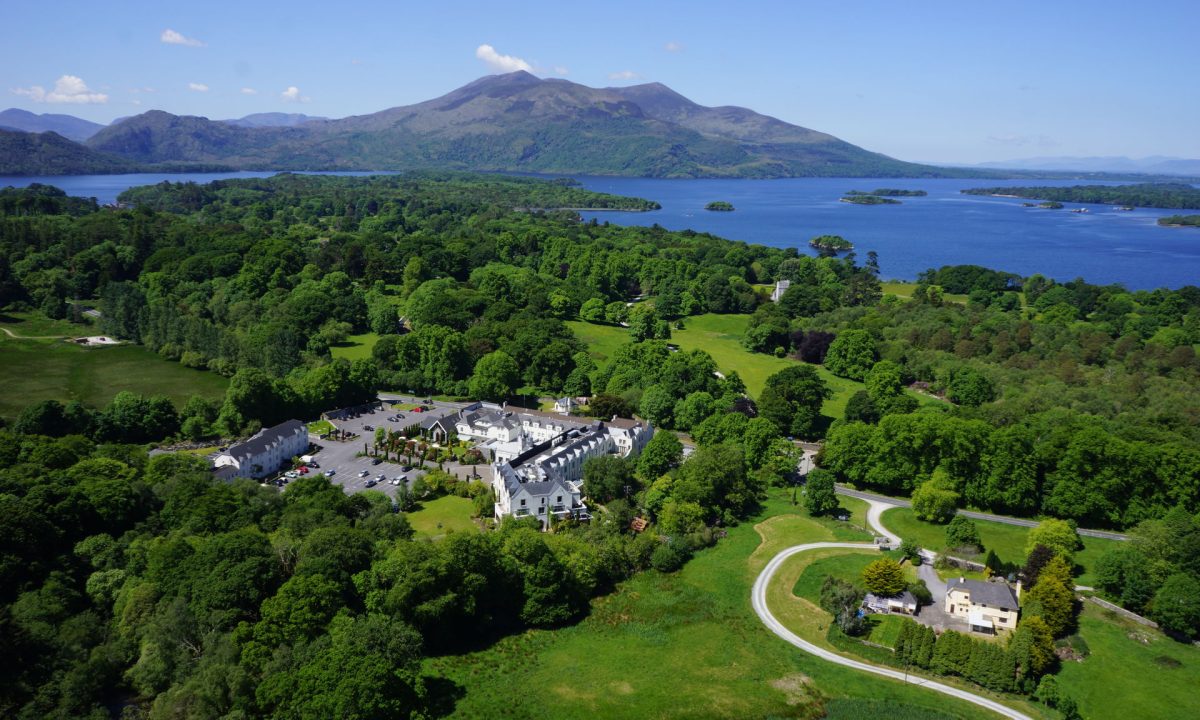
Killarney National Park in County Kerry is a gem that often tops the list of the most beautiful places to visit in Ireland. Spanning over 26,000 acres, this spectacular park boasts lush woodlands, serene lakes, rugged mountains, and a wealth of wildlife. It’s a must-visit destination for nature enthusiasts, history buffs, and anyone looking to experience Ireland’s breathtaking natural beauty.
- Hiking and Walking: Explore the numerous trails that wind through the park, offering varying levels of difficulty and stunning views of the lakes, mountains, and forests.
- Boat Tours: Enjoy a leisurely boat ride on the Lakes of Killarney, taking in the tranquil surroundings and learning about the park’s history and ecology.
- Visit Muckross House and Gardens: This magnificent 19th-century mansion and its beautifully landscaped gardens provide an insightful glimpse into Ireland’s past.
- Cycling: Rent a bike and navigate the scenic cycle routes throughout the park. The trails are well-marked and cater to all skill levels.
- Horseback Riding: For a unique perspective of the park, consider a guided horseback tour, which allows you to cover more ground while enjoying the natural beauty.
Natural Attractions
- Torc Waterfall: This stunning 20-meter-high waterfall is easily accessible and offers a short but rewarding hike through lush woodland.
- Lough Leane (Lower Lake): The largest of the three Lakes of Killarney, Lough Leane is perfect for boating, fishing, or simply relaxing beside its tranquil waters.
- Gap of Dunloe: A dramatic mountain pass that can be explored by foot, bicycle, or traditional jaunting car (horse-drawn carriage). The journey offers mesmerizing views of valleys and lakes.
Historical and Cultural Sites
- Ross Castle: A well-preserved 15th-century fortress located on the shores of Lough Leane, offering guided tours that delve into its fascinating history.
- Muckross Abbey: Explore the ruins of this 15th-century Franciscan friary, known for its well-preserved cloister and ancient yew tree.
- Innisfallen Island: Accessible by boat, this island in Lough Leane features the ruins of a 7th-century monastery and beautiful walking paths.
Scenic Spots
- Ladies View: This popular viewpoint offers one of the most iconic panoramas of Killarney National Park, with sweeping views of the lakes and valleys.
- The Meeting of the Waters: A picturesque spot where the three lakes of Killarney converge. It’s an ideal location for photography and bird-watching.
- Purple Mountain: For the more adventurous, hiking to the summit of Purple Mountain offers stunning vistas across the entire park and beyond.
- Best Time to Visit: Late spring to early autumn is the best time to visit Killarney National Park, as the weather is generally mild and foliage is at its lushest. Early mornings and late afternoons offer the best light for photography and fewer crowds.
- Weather Preparedness: The weather can be unpredictable, so dress in layers and bring a waterproof jacket. Comfortable hiking boots are essential for exploring the trails.
- Safety Tips: Stick to designated paths and follow safety signs, particularly near water bodies and cliffs. Keep an eye on weather forecasts, as conditions can change rapidly.
- Parking and Accessibility: There are several parking areas within the park, but these can fill up quickly during peak times. Arrive early or use public transportation when possible.
- Wildlife Watching: Killarney National Park is home to red deer, the only native herd in Ireland. Bring binoculars and keep an eye out for these majestic creatures.
- Local Cuisine: After a day of exploration, enjoy a meal in the nearby town of Killarney, which boasts a variety of restaurants offering everything from traditional Irish fare to international cuisine.
- Accommodation: Killarney offers a range of accommodation options, including hotels, guesthouses, and campgrounds. Booking ahead, especially during the summer months, is recommended.
- Sustainable Tourism: Help preserve the park’s natural beauty by practicing Leave No Trace principles. Carry out your trash, minimize your impact on the trails, and respect the wildlife.
- Guided Tours: Consider joining a guided tour for deeper insights into the park’s history, ecology, and hidden gems. Local guides can offer unique perspectives and stories that enhance your visit.
In summary, Killarney National Park in Kerry stands out as one of the most beautiful places to visit in Ireland. From its rich history and diverse wildlife to its scenic trails and tranquil lakes, the park offers something for every type of traveler. Whether you’re hiking, cycling, or simply soaking in the views, Killarney National Park provides an unforgettable Irish experience.
7. Dingle Peninsula, kerry
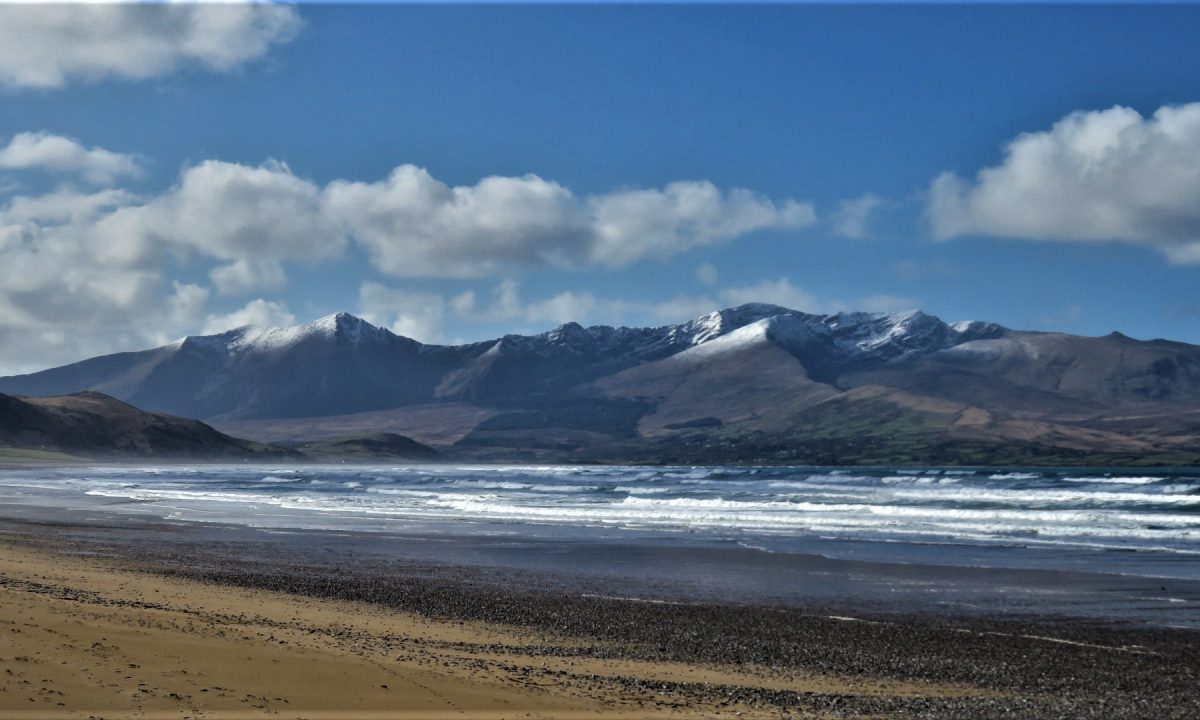
The Dingle Peninsula, located in County Kerry, is a stunning coastal region that consistently ranks among the most beautiful places to visit in Ireland. Renowned for its rugged landscapes, pristine beaches, charming villages, and rich cultural heritage, the Dingle Peninsula offers an abundance of attractions for nature lovers, history buffs, and adventurers alike.
- Drive the Slea Head Loop: This iconic scenic drive offers breathtaking views of the Atlantic Ocean, rugged cliffs, and historical landmarks. Perfect for capturing unforgettable photographs.
- Explore Dingle Town: Wander through this vibrant harbor town, known for its colorful homes, lively pubs, and artisan shops. Don’t miss the local seafood at one of the many excellent restaurants.
- Fungie the Dolphin: Take a boat tour from Dingle Harbour to see Fungie, the famous resident dolphin, who has been delighting visitors for decades.
- Hiking and Walking: The peninsula offers numerous hiking trails, including parts of the Dingle Way, a long-distance walking route that showcases the region’s natural beauty.
- Visit Great Blasket Island: Accessed by ferry, this remote island offers spectacular scenery, wildlife, and the ruins of an old village. Ideal for a day of exploration.
Natural Attractions
- Connor Pass: One of Ireland’s highest mountain passes, offering panoramic views of the peninsula. A must-visit for any nature enthusiast.
- Inch Beach: This expansive sandy beach is perfect for surfing, swimming, or simply relaxing with the backdrop of stunning vistas.
- Mount Brandon: Hike to the summit of this majestic mountain for unrivaled views of the surrounding landscapes.
Historical and Cultural Sites
- Gallarus Oratory: This well-preserved early Christian church, built between the 6th and 9th centuries, is one of Ireland’s most intriguing ancient monuments.
- Dunbeg Fort: Perched on a cliff’s edge, this Iron Age fort offers fascinating insights into Ireland’s ancient past and provides spectacular ocean views.
- Blasket Centre: Learn about the history and heritage of the Blasket Islands and their inhabitants through informative exhibits and multimedia presentations.
Villages and Towns
- Dingle Town: Besides enjoying its lively atmosphere, visit the Dingle Oceanworld Aquarium or take a stroll along the picturesque marina.
- Annascaul: Known for its scenic surroundings and the famous Antarctic explorer Tom Crean’s pub, South Pole Inn.
- Ballyferriter: A charming village where you can experience rich Gaelic culture and stunning views of the surrounding fields and coast.
- Best Time to Visit: The summer months offer the best weather and vibrant atmosphere. However, the shoulder seasons of late spring and early autumn provide fewer tourists and still pleasant conditions.
- Weather Preparedness: The weather can be variable, so bring layers, waterproof clothing, and sturdy footwear for exploring the varied terrain.
- Driving Tips: Roads can be narrow and winding, especially along the Slea Head Loop. Drive carefully and be mindful of sheep and other livestock that may wander onto the roads.
- Parking and Accessibility: Parking can be limited at popular sites. Consider visiting early in the morning or later in the afternoon to avoid crowds.
- Photography Tips: The Dingle Peninsula is a photographer’s paradise. Capture the best shots during the golden hours of sunrise and sunset for stunning light and fewer tourists.
- Local Cuisine: Don’t miss the seafood, which is a highlight of the local cuisine. Pubs and restaurants in Dingle Town offer fresh fish, chowder, and other regional dishes.
- Public Transport: Limited public transportation is available, so renting a car is often the best way to explore the peninsula. However, organized tours can also provide a hassle-free experience.
- Accommodation: Book your lodging in advance, especially during peak tourist seasons. Options range from cozy bed and breakfasts to luxury hotels.
- Respect Local Culture: The Dingle Peninsula is part of the Gaeltacht, a region where the Irish language is actively spoken. Respect the local culture and try to learn a few basic Irish phrases.
- Sustainable Tourism: Preserve the beauty of the Dingle Peninsula by minimizing your waste, sticking to designated paths, and respecting wildlife and local communities.
In conclusion, the Dingle Peninsula in Kerry is undoubtedly one of the most beautiful places to visit in Ireland. Its dramatic landscapes, rich cultural heritage, and charming towns make it a captivating destination for any traveler. Whether you’re driving along the scenic routes, hiking through stunning terrains, or exploring ancient sites, the Dingle Peninsula promises a truly unforgettable Irish experience.
8. The Burren, Clare
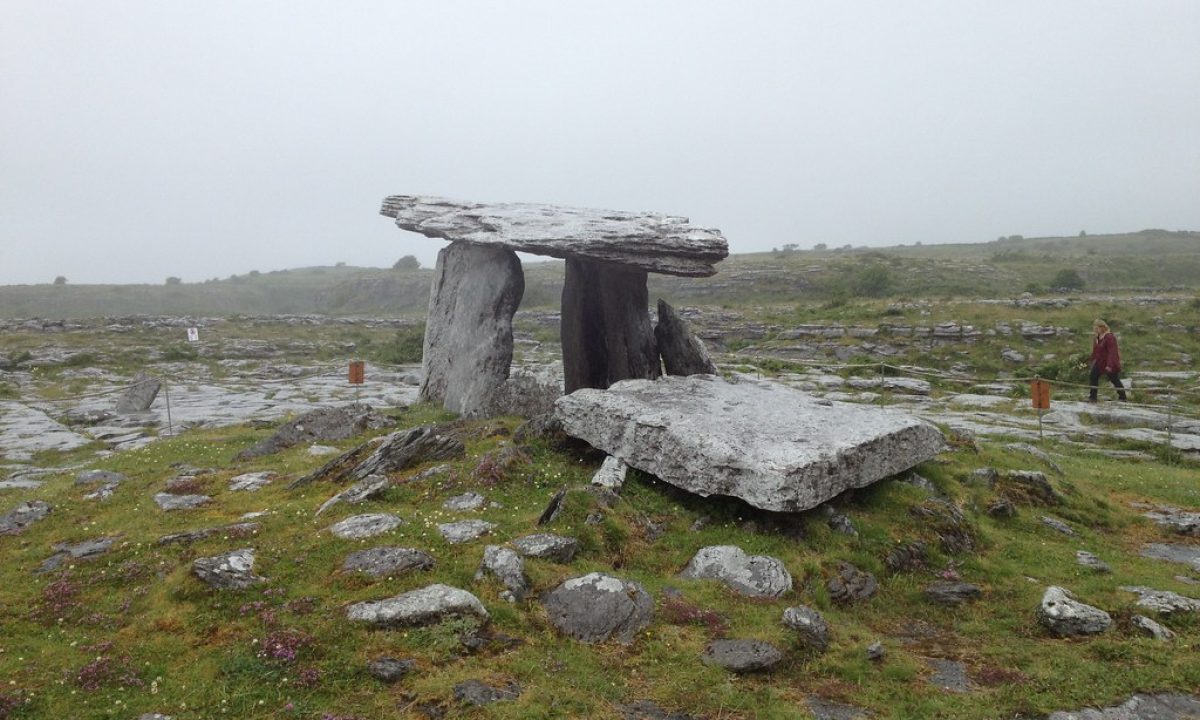
The Burren, located in County Clare, is a striking limestone plateau that often tops the list of the most beautiful places to visit in Ireland. Renowned for its unique karst landscape, rich flora, ancient archaeological sites, and vibrant cultural heritage, The Burren offers a diverse and unforgettable experience for visitors.
- Explore Burren National Park: Wander through diverse trails that showcase the park’s unique flora and geological formations. Each trail offers different levels of difficulty and varying landscapes.
- Visit the Cliffs of Moher: Although technically not part of The Burren, these iconic cliffs are nearby and offer stunning views of the Atlantic Ocean and surrounding countryside.
- Caving and Rock Climbing: Delve into the underground world with guided tours of places like Aillwee Cave, or challenge yourself with rock climbing on the limestone cliffs.
- Wildlife and Bird Watching: The Burren is a haven for wildlife enthusiasts. Bring binoculars and look out for rare birds, butterflies, and mammals that inhabit the area.
- Attend Traditional Music Sessions: Experience live traditional Irish music in local pubs in Kinvara, Ballyvaughan, and other nearby villages.
Natural Attractions
- Burren National Park: Home to a variety of walking trails that highlight the region’s unique limestone formations, rare plant species, and scenic views.
- Aillwee Cave: This extensive cave system features impressive stalactites and stalagmites, an underground waterfall, and the Birds of Prey Centre.
- Poulnabrone Dolmen: One of the most famous and well-preserved portal tombs in Ireland, dating back to the Neolithic period.
Historical and Cultural Sites
- Caherconnell Stone Fort: An ancient ring fort offering guided tours and insights into the life of early Irish settlers. You can also watch sheepdog demonstrations here.
- Kilfenora Cathedral: Visit this historic cathedral known for its collection of high crosses and beautiful medieval architecture.
- Dysert O’Dea Castle: Explore the 15th-century castle and its surrounding archaeological sites, including a holy well and medieval church ruins.
Scenic Spots
- Black Head: A coastal area offering panoramic views of Galway Bay and the Aran Islands, perfect for a scenic drive or hike.
- Slieve Carran Nature Reserve: Discover this less-traveled reserve with marked trails that lead to stunning limestone pavements and rare plant species.
- Fanore Beach: A serene sandy beach ideal for a relaxing day by the sea, complete with beautiful views of the Atlantic Ocean.
- Best Time to Visit: Late spring and early autumn are ideal times to visit The Burren, as the weather is mild and the wildflowers are in bloom. Summer offers the best conditions for outdoor activities but can be crowded.
- Weather Preparedness: The weather can change quickly, so be sure to dress in layers and carry a waterproof jacket. Sturdy walking shoes are essential for navigating the rocky terrain.
- Safety Tips: Stick to marked trails and be mindful of the uneven ground. If caving or rock climbing, it’s recommended to join guided tours for safety and expertise.
- Parking and Accessibility: Parking is available at major attractions, but can fill up quickly during peak times. Consider arriving early or using local transport options.
- Local Cuisine: Sample local dishes and fresh seafood at nearby restaurants and pubs. Don’t miss out on trying traditional Irish dishes like seafood chowder and soda bread.
- Accommodation: Options range from cozy bed and breakfasts to luxury lodges. Booking in advance is advisable, especially during the busy summer months.
- Sustainable Tourism: Respect the natural environment by not disturbing wildlife and staying on designated paths to prevent erosion. Dispose of waste properly to help preserve the park’s beauty.
- Local Culture: The Burren is rich in cultural heritage. Engage with locals and learn about traditional crafts, music, and folklore to enrich your experience.
- Photography Tips: The Burren’s landscape offers unique photo opportunities. Early mornings and late afternoons provide the best light for capturing the intricate details of the limestone formations.
- Nearby Attractions: Combine your visit to The Burren with trips to nearby attractions like the Cliffs of Moher, the Aran Islands, and Galway city for a well-rounded experience of the region.
In conclusion, The Burren in County Clare is undoubtedly one of the most beautiful places to visit in Ireland. With its unique geological formations, rich biodiversity, and cultural heritage, it provides an enriching and memorable experience for all who visit. Whether you’re hiking through its intricate trails, exploring ancient ruins, or simply soaking in the stunning landscapes, The Burren promises an unforgettable journey.
9. Wicklow Mountains
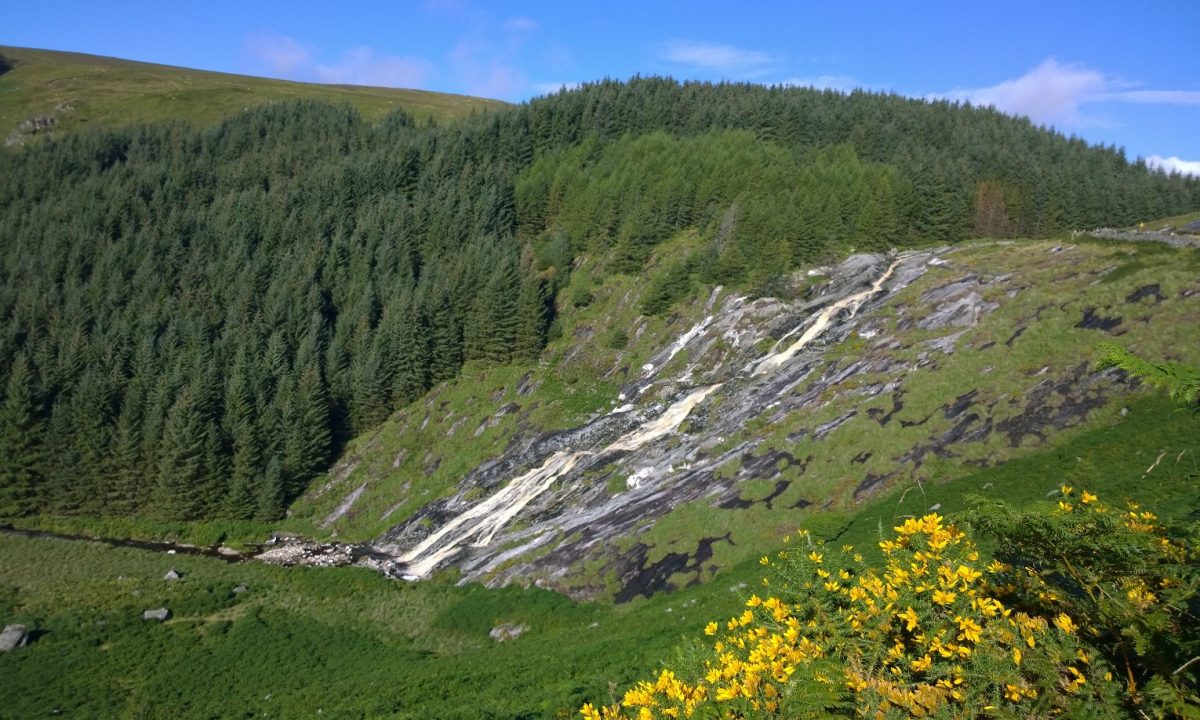
The Wicklow Mountains, often referred to as the “Garden of Ireland,” are a breathtaking mountain range located just south of Dublin. Spanning an area of rugged peaks, deep glacial valleys, and serene lakes, this area is undeniably one of the most beautiful places to visit in Ireland. The Wicklow Mountains National Park offers a myriad of outdoor activities, historical sites, and stunning natural landscapes that appeal to all kinds of travelers.
- Hiking and Walking: The Wicklow Mountains are a hiker’s paradise, offering trails of varying difficulty. Popular routes include the Wicklow Way, a long-distance trail that traverses the heart of the mountains.
- Explore Glendalough: Visit this ancient monastic settlement nestled in a glacial valley, renowned for its scenic beauty and historical significance.
- Visit the Powerscourt Estate: Wander through the beautifully landscaped gardens and visit the impressive Powerscourt House.
- Cycling: Rent a bike and take advantage of the numerous cycling trails that offer panoramic views of the mountains and valleys.
- Wildlife Watching: The national park is home to a variety of wildlife, including deer, foxes, and rare bird species. Bring binoculars for optimal viewing.
Natural Attractions
- Glendalough: Known for its breathtaking scenery and monastic ruins, Glendalough features two beautiful lakes and numerous hiking trails.
- Lough Tay (The Guinness Lake): This striking lake, with its dark water and white sandy beach, is a must-see and offers incredible photo opportunities.
- Powerscourt Waterfall: Ireland’s highest waterfall, located in the Powerscourt Estate, provides a stunning backdrop for picnics and leisurely walks.
Historical and Cultural Sites
- Glendalough Monastic Site: Founded by St. Kevin in the 6th century, this site includes a round tower, several churches, and ancient crosses.
- Powerscourt House and Gardens: An elegant estate offering beautifully designed gardens, an informative visitor center, and a selection of specialty shops.
- Military Road: Built in the early 19th century to help suppress Irish rebellions, driving along this road offers a historical perspective and fantastic views.
Scenic Spots
- Sally Gap: A mountain pass with extensive views over the Wicklow Mountains, perfect for driving or cycling.
- Luggala: The scenic estate of Luggala offers stunning vistas and is often used as a filming location due to its dramatic landscapes.
- The Great Sugar Loaf: A distinctive peak that offers a relatively easy climb with spectacular views from the top.
- Best Time to Visit: Late spring through early autumn offers the best weather for outdoor activities. However, each season brings its own unique charm to the Wicklow Mountains.
- Weather Preparedness: The weather can be unpredictable, especially in the mountains. Dress in layers, bring waterproof clothing, and wear sturdy hiking boots.
- Safety Tips: Stick to marked trails and inform someone of your plans if hiking alone. The terrain can be challenging, so always carry a map, compass, and sufficient supplies.
- Parking and Accessibility: Parking is available at major sites like Glendalough and Powerscourt Estate but can fill up quickly during peak times. Arrive early to secure a spot.
- Local Cuisine: Enjoy local dishes in nearby towns and villages. Pubs and restaurants in Wicklow, Laragh, and Roundwood offer everything from hearty Irish stews to fresh seafood.
- Accommodation: Options range from cozy bed and breakfasts to luxury hotels and camping sites. Booking in advance is recommended, especially during the tourist season.
- Photography Tips: Early mornings and late afternoons provide the best light for capturing the stunning landscapes. Don’t forget to bring a tripod for steady shots of the beautiful surroundings.
- Public Transport: While having a car offers flexibility, public buses run from Dublin to some key locations in the Wicklow Mountains. Consider using public transport for a more eco-friendly visit.
- Guided Tours: For added insights into the area’s history and natural features, consider joining a guided tour. Local guides can offer fascinating stories and information that you might otherwise miss.
- Respect the Environment: Practice Leave No Trace principles to help preserve the natural beauty of the Wicklow Mountains. Take your litter with you and avoid disturbing wildlife.
In conclusion, the Wicklow Mountains are undoubtedly one of the most beautiful places to visit in Ireland. With their diverse landscapes, historical sites, and abundant outdoor activities, the mountains offer an array of experiences for every type of traveler. Whether you’re hiking through its scenic trails, exploring ancient ruins, or simply soaking in the natural beauty, the Wicklow Mountains promise an unforgettable journey.
10. Skellig Michael, kerry

Skellig Michael, also known as Great Skellig, is an extraordinary island off the coast of County Kerry. Recognized as a UNESCO World Heritage Site, this remote island is a striking blend of natural beauty and ancient history, making it one of the most beautiful places to visit in Ireland. Its dramatic cliffs, ancient monastic settlements, and stunning ocean views offer a unique experience for all who visit.
- Visit the Monastic Settlement: Explore the ancient monastic site, established in the 6th century. Marvel at the well-preserved beehive huts, oratories, and stone steps that tell the story of early Christian monks.
- Bird Watching: Skellig Michael is a haven for seabirds, including puffins, gannets, and shearwaters. Bring binoculars for a closer look at these remarkable creatures.
- Marine Wildlife Sightseeing: Keep an eye out for dolphins, seals, and even the occasional whale in the waters surrounding the island.
- Photograph the Landscape: Capture breathtaking views of the rugged cliffs, the picturesque lighthouse, and the vast Atlantic Ocean.
- Star Wars Tour: For film enthusiasts, Skellig Michael served as a filming location for the Star Wars sequels. Relive iconic scenes from the movies as you explore the island.
Historical and Cultural Sites
- Monastic Cells: The beehive huts, or clocháns, where monks lived and prayed offer a fascinating glimpse into early Christian monastic life.
- Church of St. Michael: This ancient church, situated within the monastic settlement, is a testament to the island’s religious significance.
- The South Peak: For those fit and adventurous, climbing to the South Peak provides an extraordinary view of the entire island and its historic structures.
Natural Attractions
- The Steps to the Monastery: Ascend the 600+ stone steps that lead up to the monastic settlement, offering panoramic views and a sense of historical pilgrimage.
- Skellig Lighthouse: While not open to the public, the lighthouse at the base of the island can be viewed from boat tours and adds to the island’s rugged charm.
Scenic Spots
- Puffin Habitats: Several spots on the island are perfect for observing the charming puffin colonies during their breeding season from April to August.
- Viewing Points: Various vantage points across Skellig Michael offer breathtaking panoramic views of the Atlantic Ocean and the neighboring Little Skellig.
- Best Time to Visit: The island is accessible only from May to October, weather permitting. Plan your trip during this period and book early as tours fill up quickly.
- Weather Preparedness: Weather on the island can be unpredictable. Wear layers, waterproof clothing, and sturdy walking shoes to navigate the rough terrain.
- Safety Tips: Follow the instructions of your tour guide closely. The terrain can be steep and uneven, and the steps can be slippery, especially after rain.
- Booking and Accessibility: Boat trips to Skellig Michael can be booked from nearby towns such as Portmagee, Ballinskelligs, and Caherdaniel. Book well in advance as there are a limited number of permits issued each day.
- Local Cuisine: After your visit, enjoy fresh seafood and local dishes in the nearby towns. The Fisherman’s Bar in Portmagee is a popular spot for weary travelers to relax and dine.
- Photography Tips: Early mornings and late afternoons provide the best light for photography. Ensure your camera or phone is secured with a strap to prevent accidents.
- Be Prepared for a Boat Ride: The boat ride to Skellig Michael can be rough. Those prone to seasickness should come prepared with appropriate medication or remedies.
- Respect the Environment: Help preserve the island’s natural beauty and historic integrity by sticking to designated paths, not disturbing wildlife, and taking all litter back with you.
- Stay Hydrated and Nourished: Bring water and snacks, as there are no facilities on the island. However, be mindful of carrying litter back to the mainland.
- Guided Tours: Consider taking a guided tour that provides historical context and insights about the monastic settlement and the island’s natural features.
In conclusion, Skellig Michael is undoubtedly one of the most beautiful places to visit in Ireland, offering a unique blend of natural splendor and historical intrigue. Whether you’re ascending the ancient stone steps, marveling at the monastic settlement, or observing vibrant wildlife, Skellig Michael promises an experience like no other. Visit this majestic island and immerse yourself in its rich history and breathtaking landscapes.

